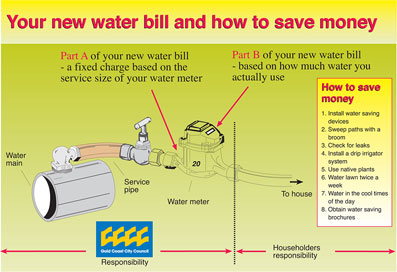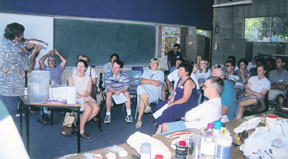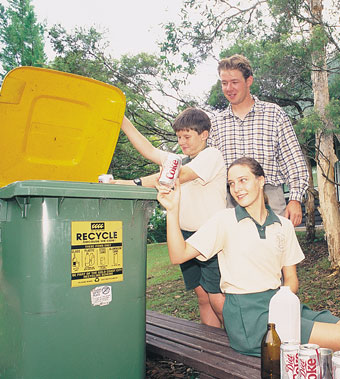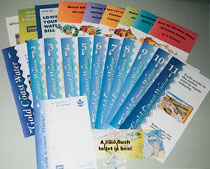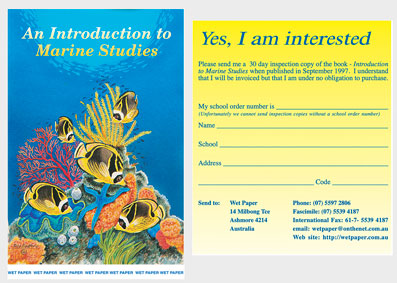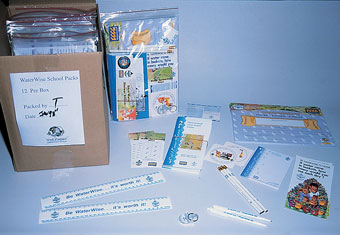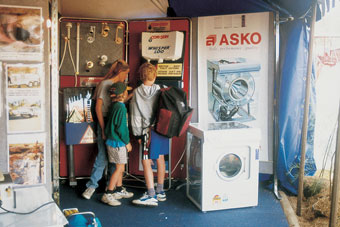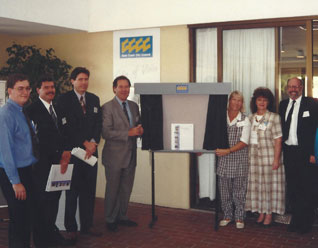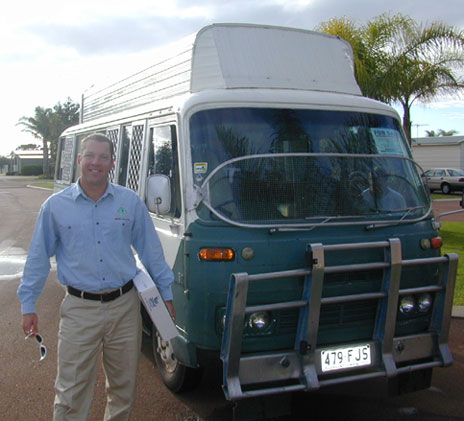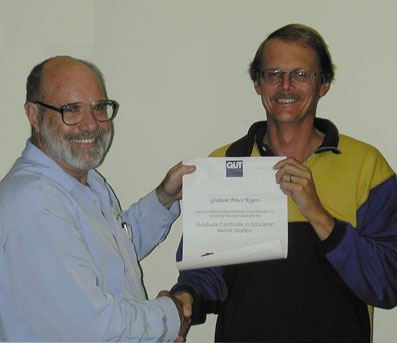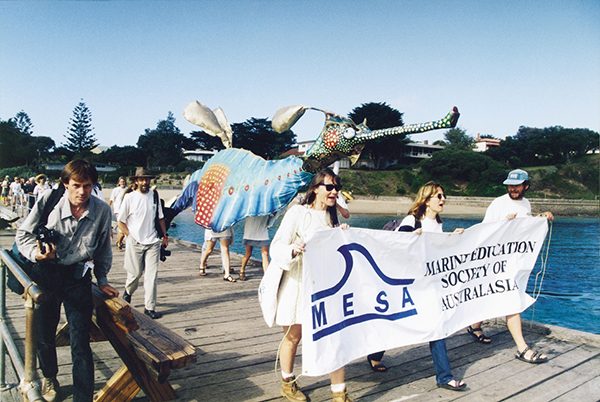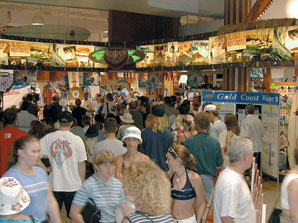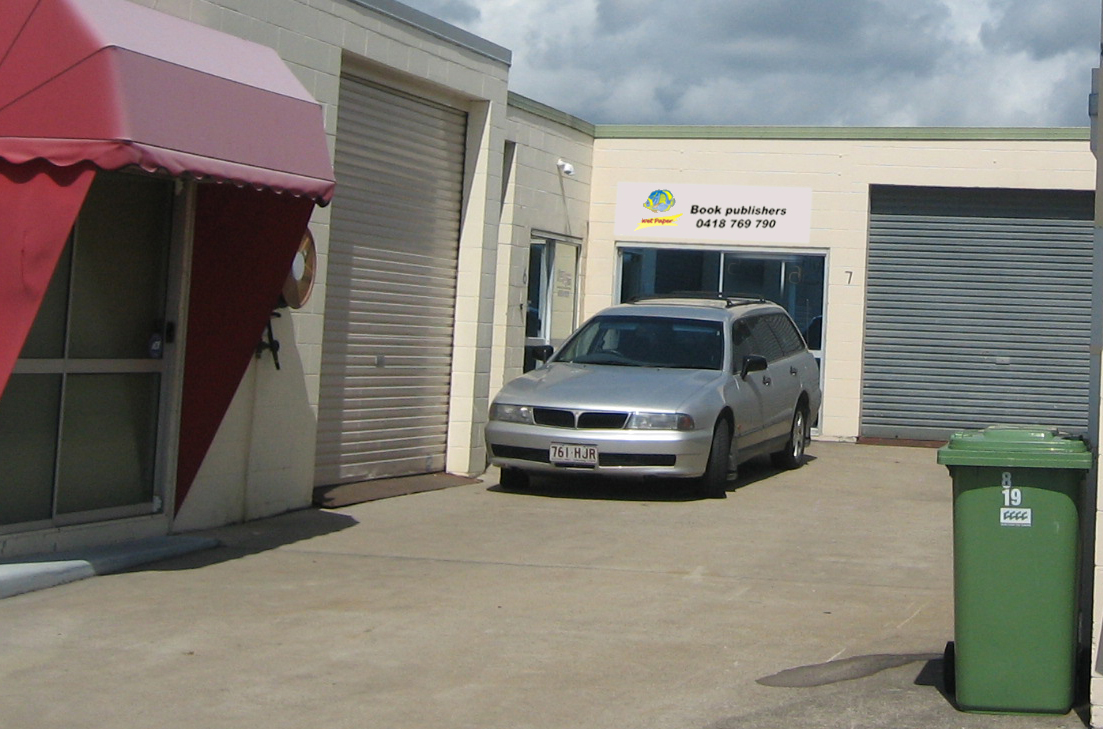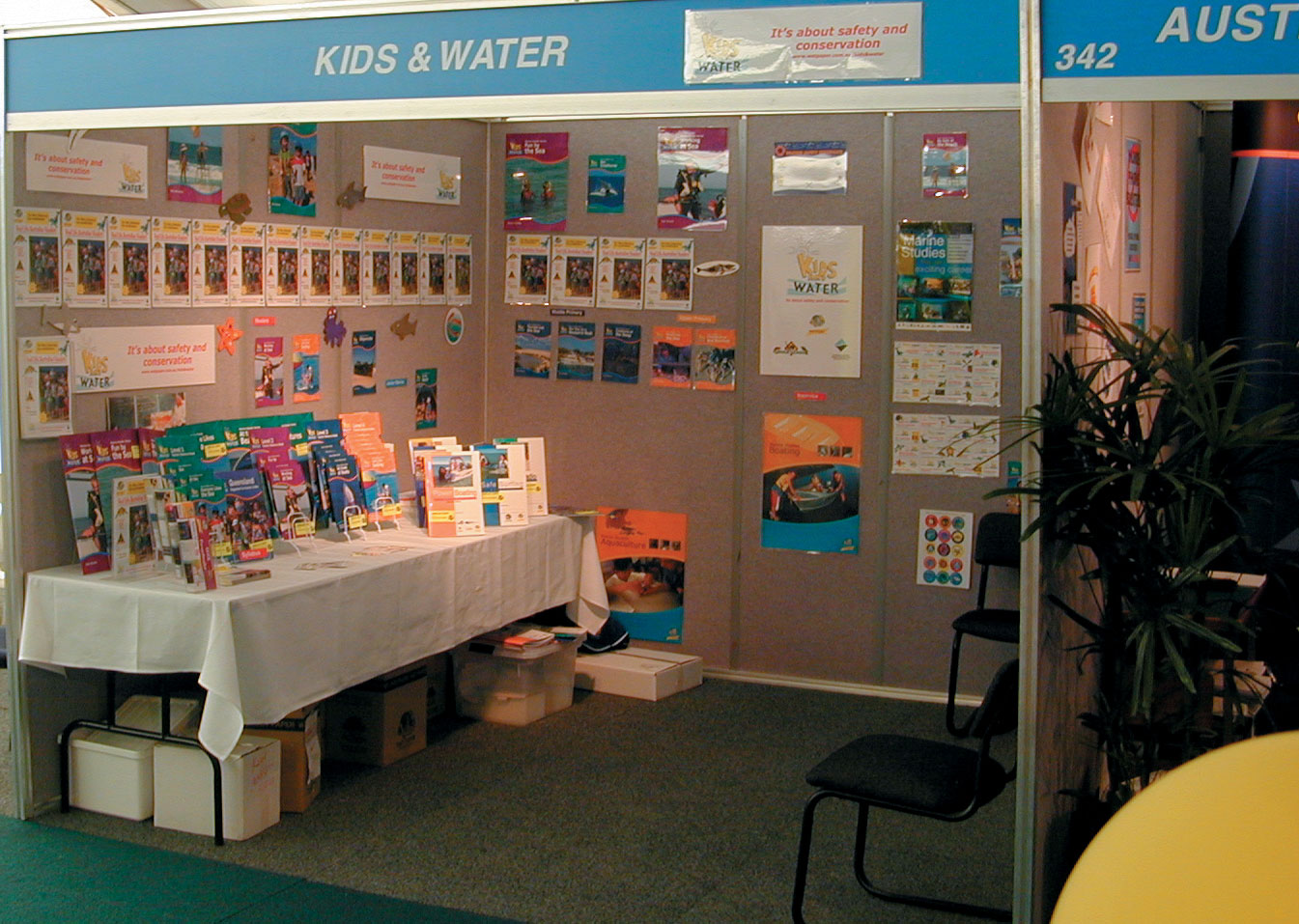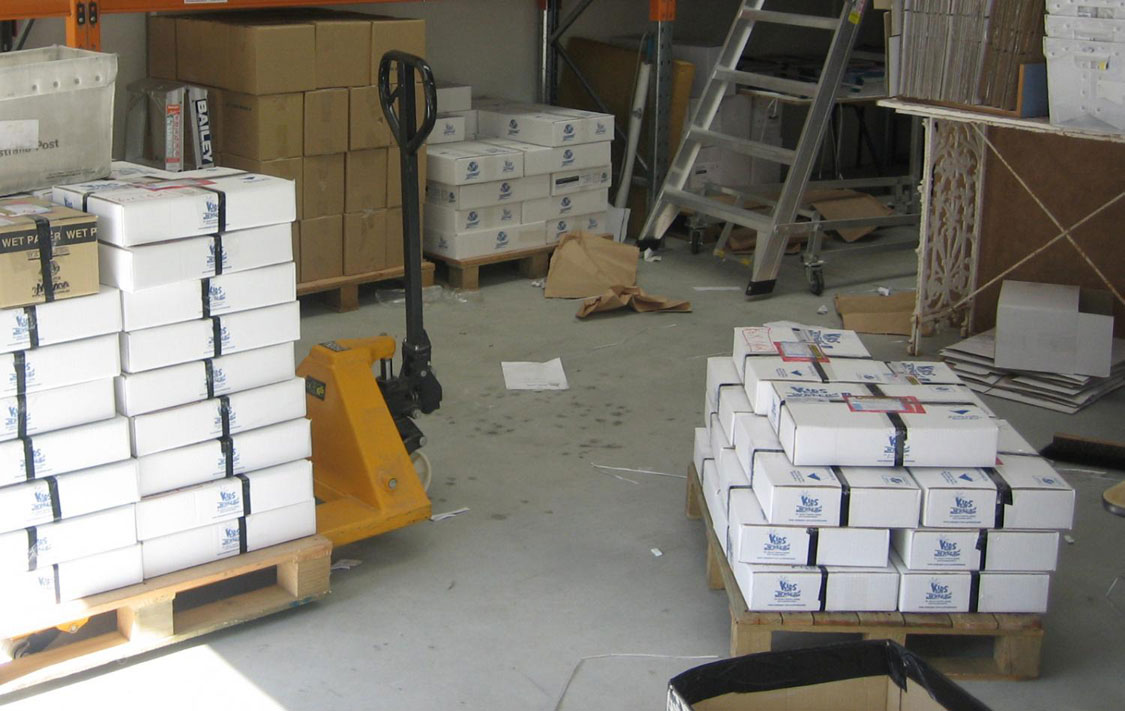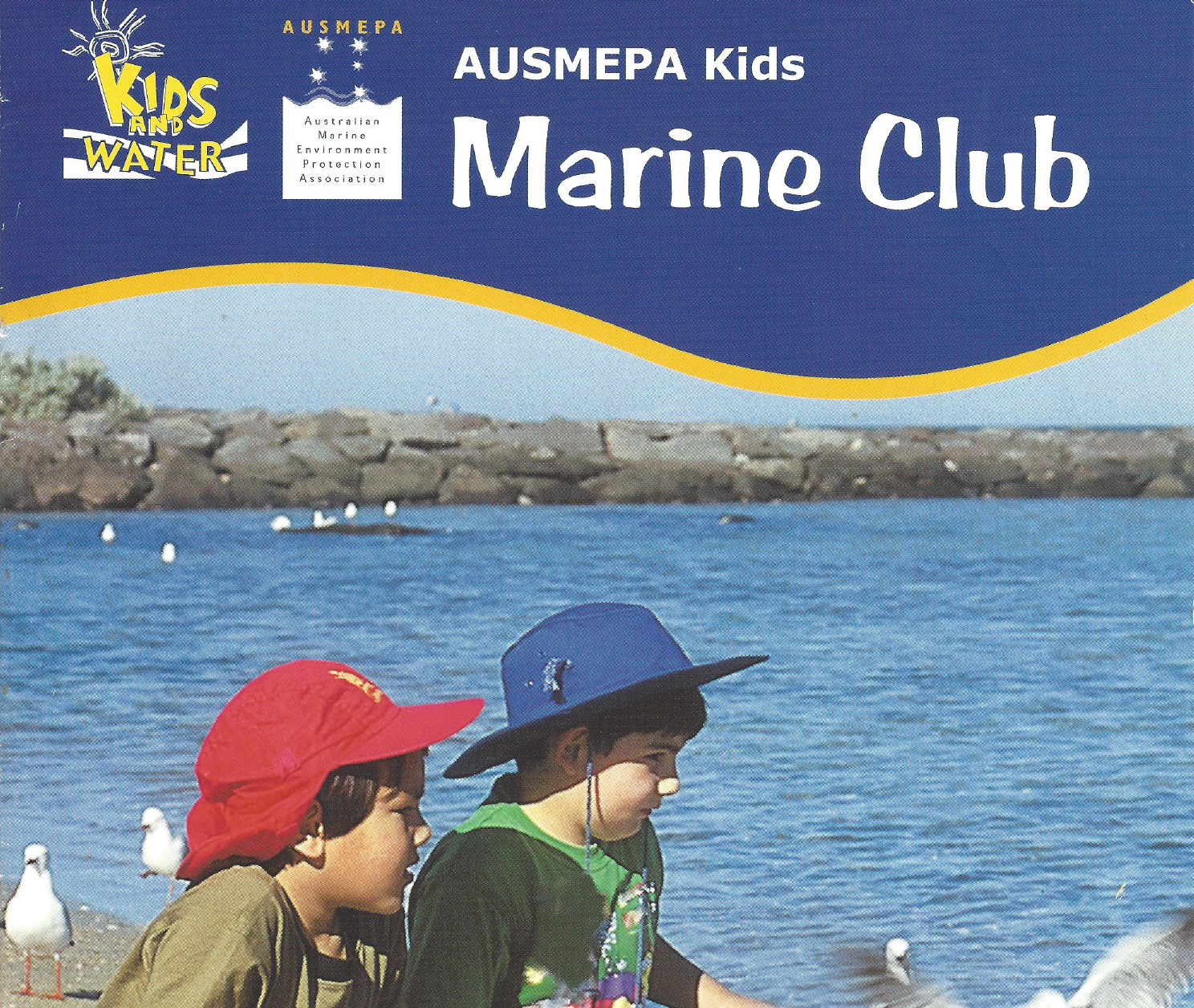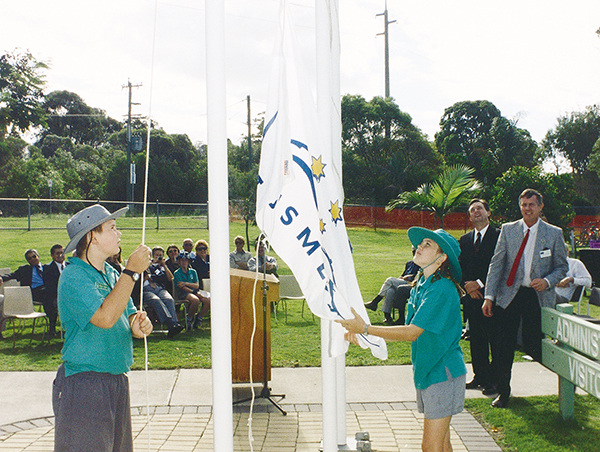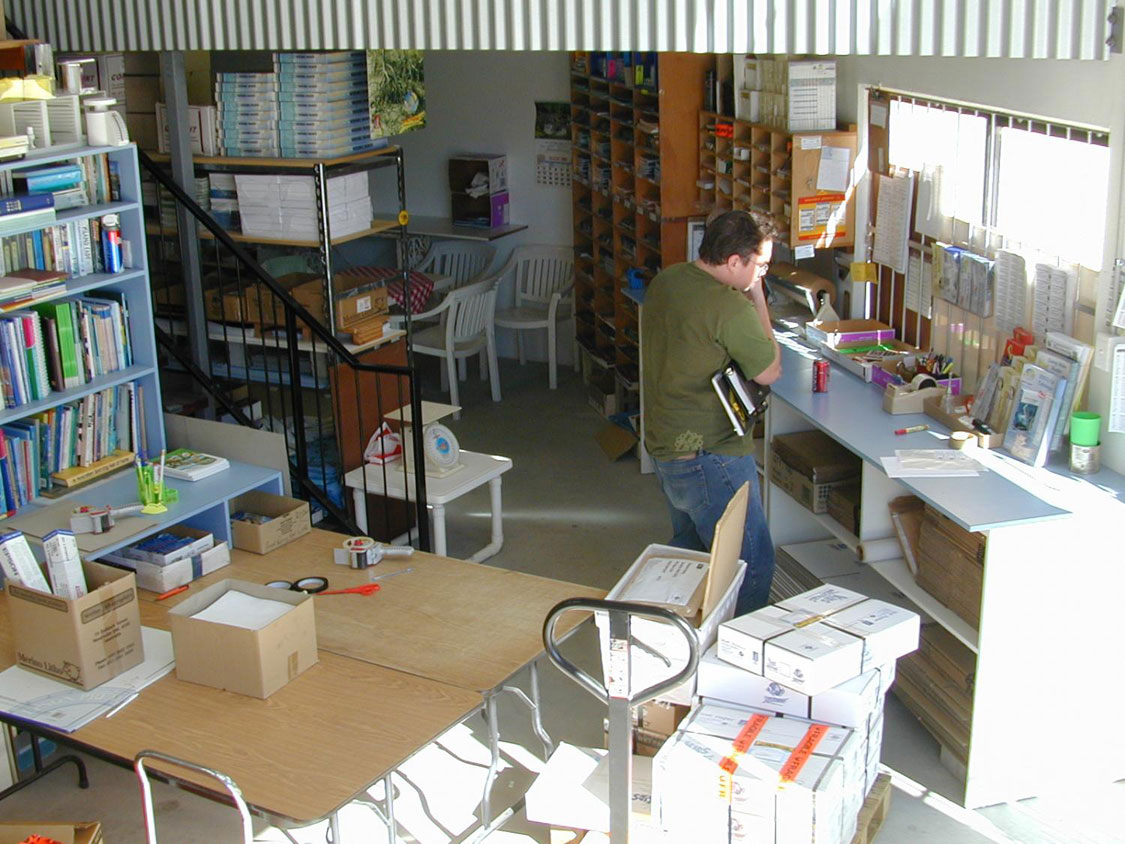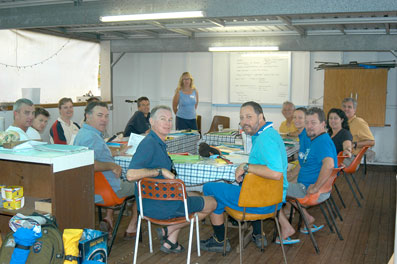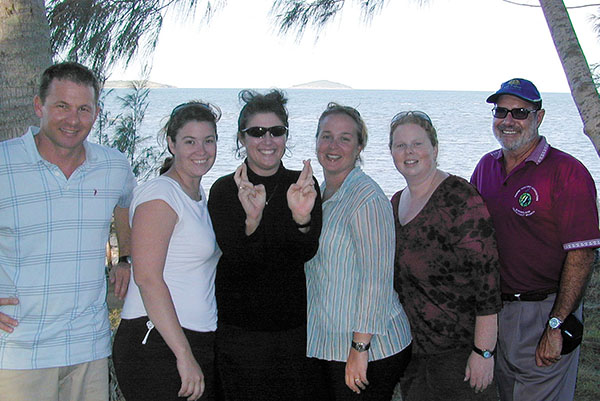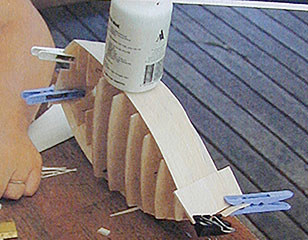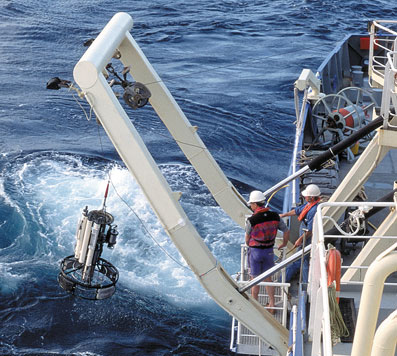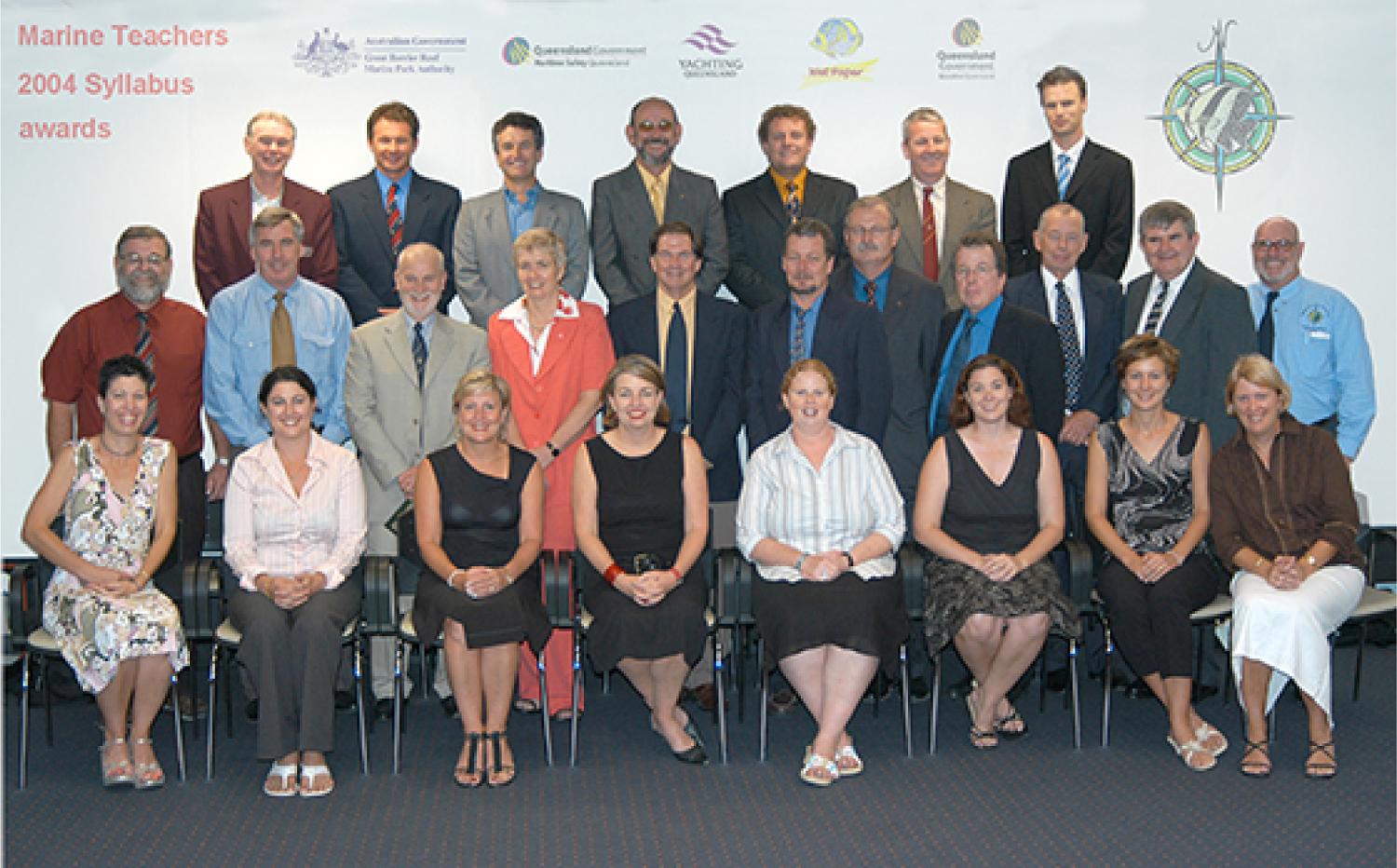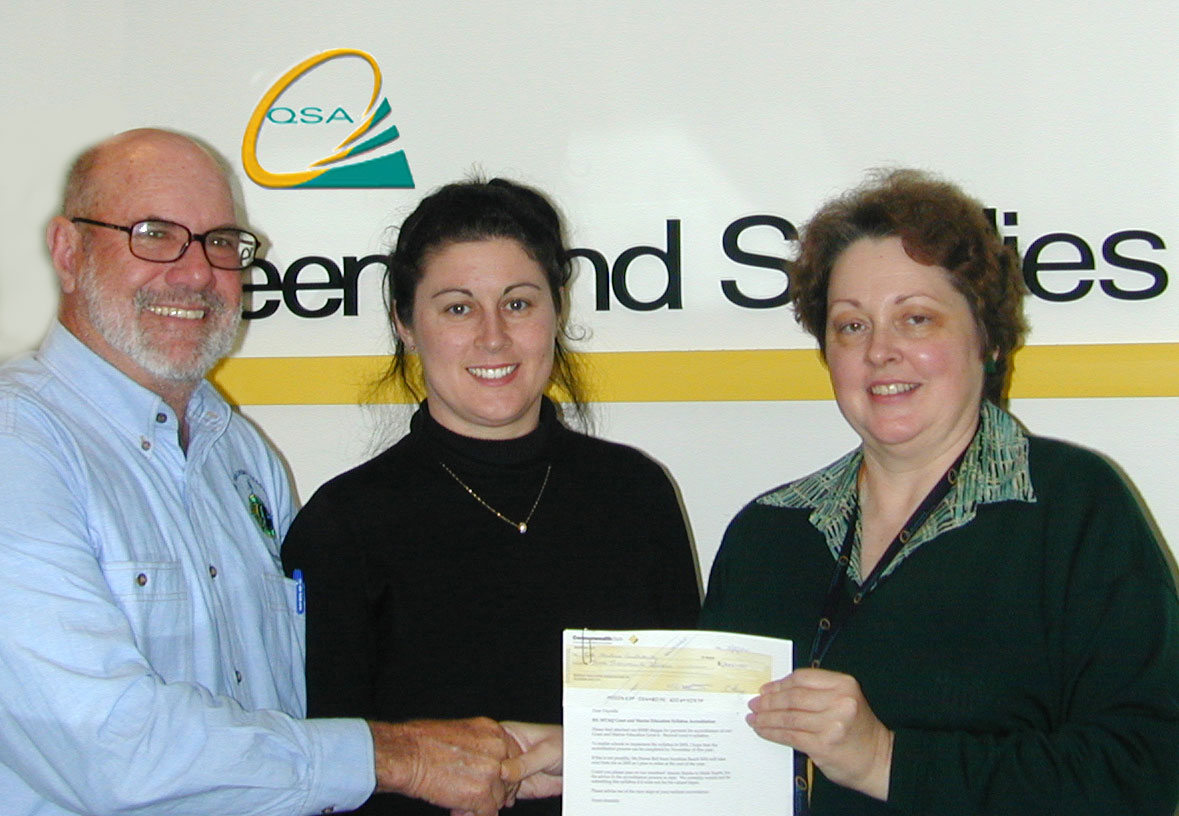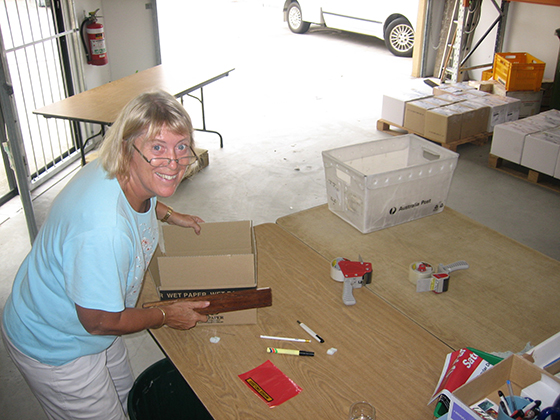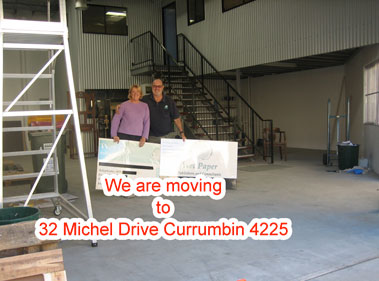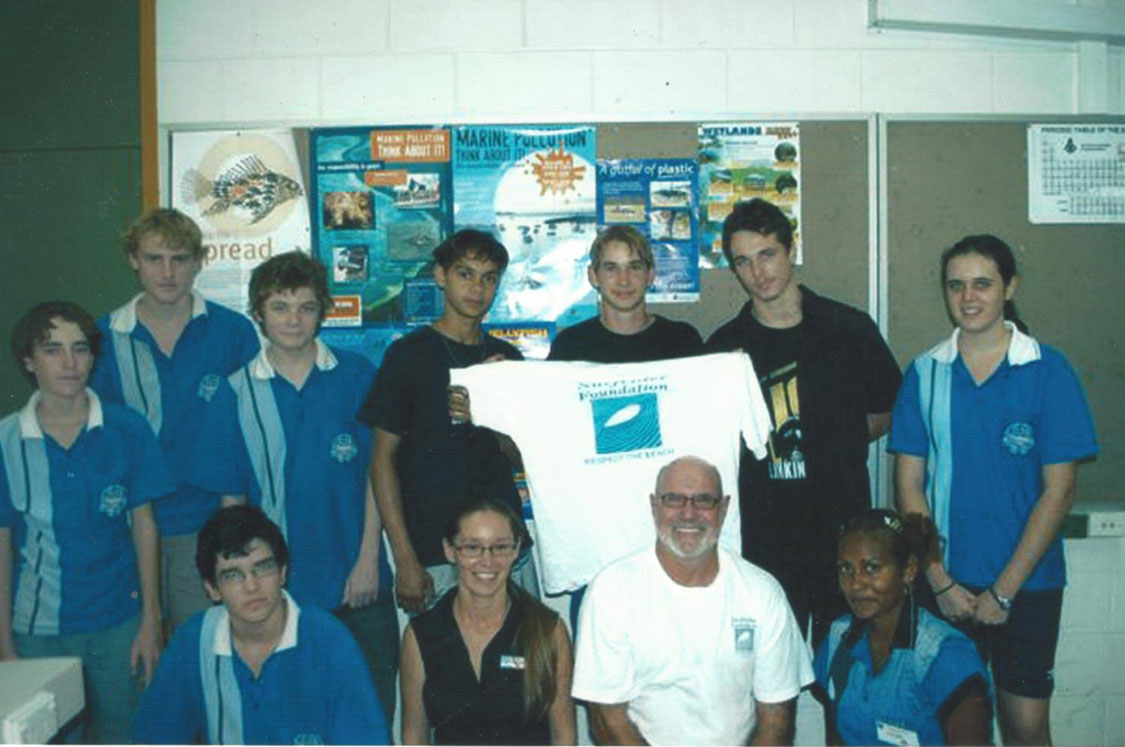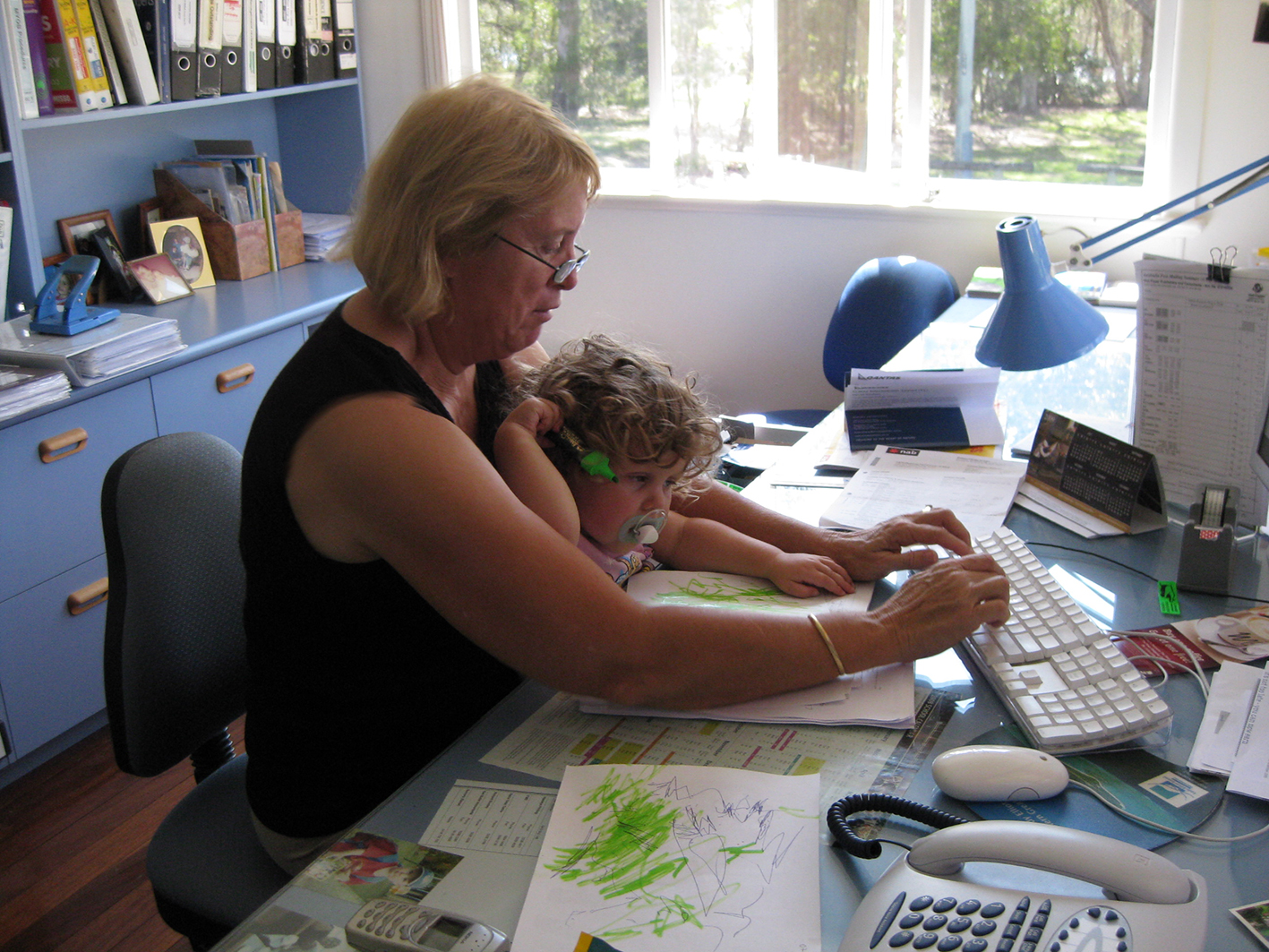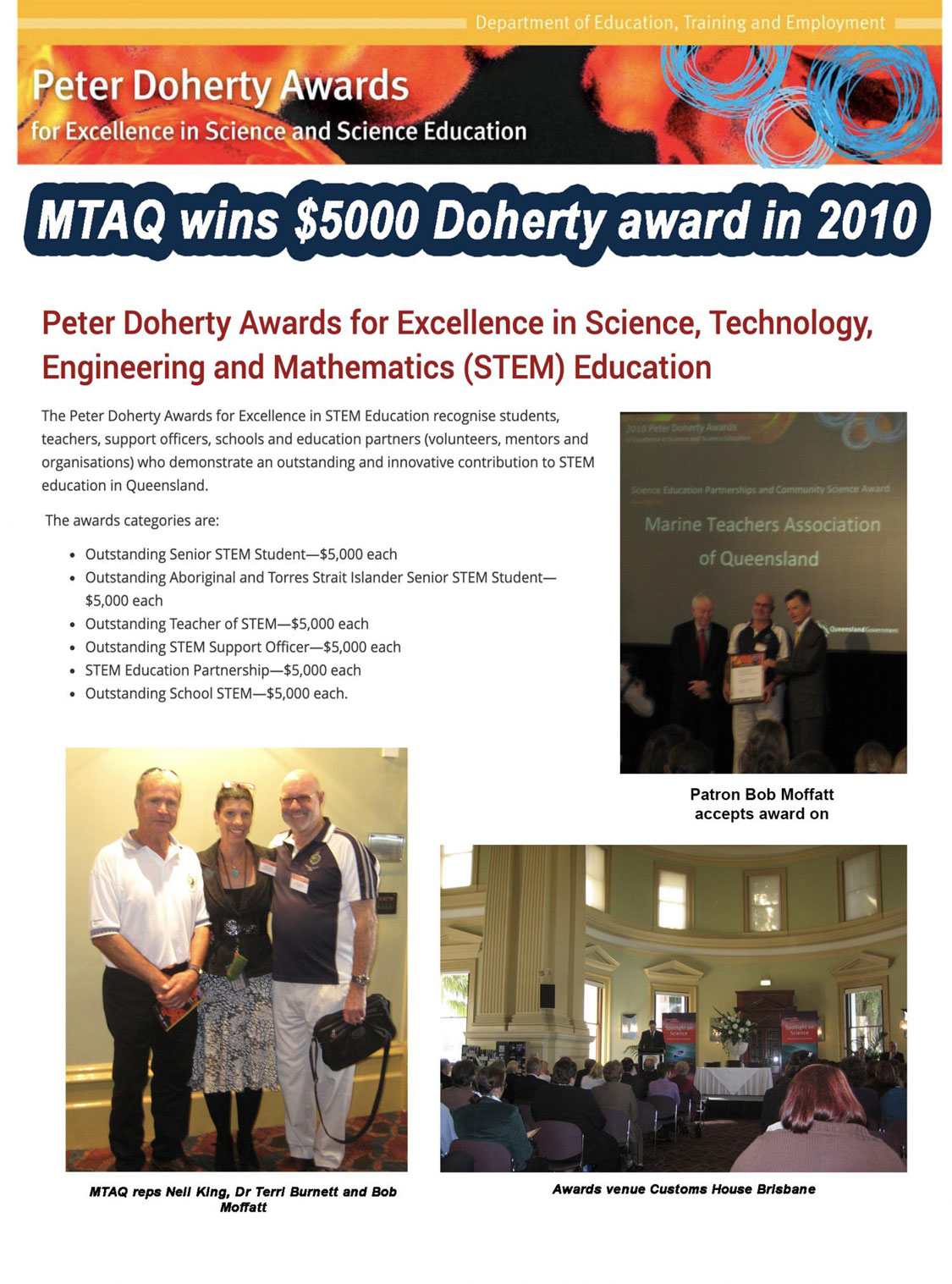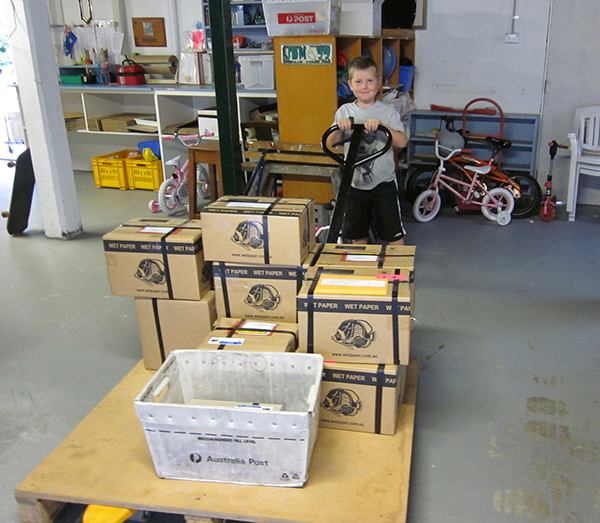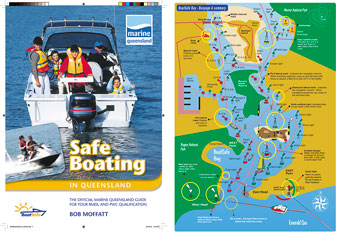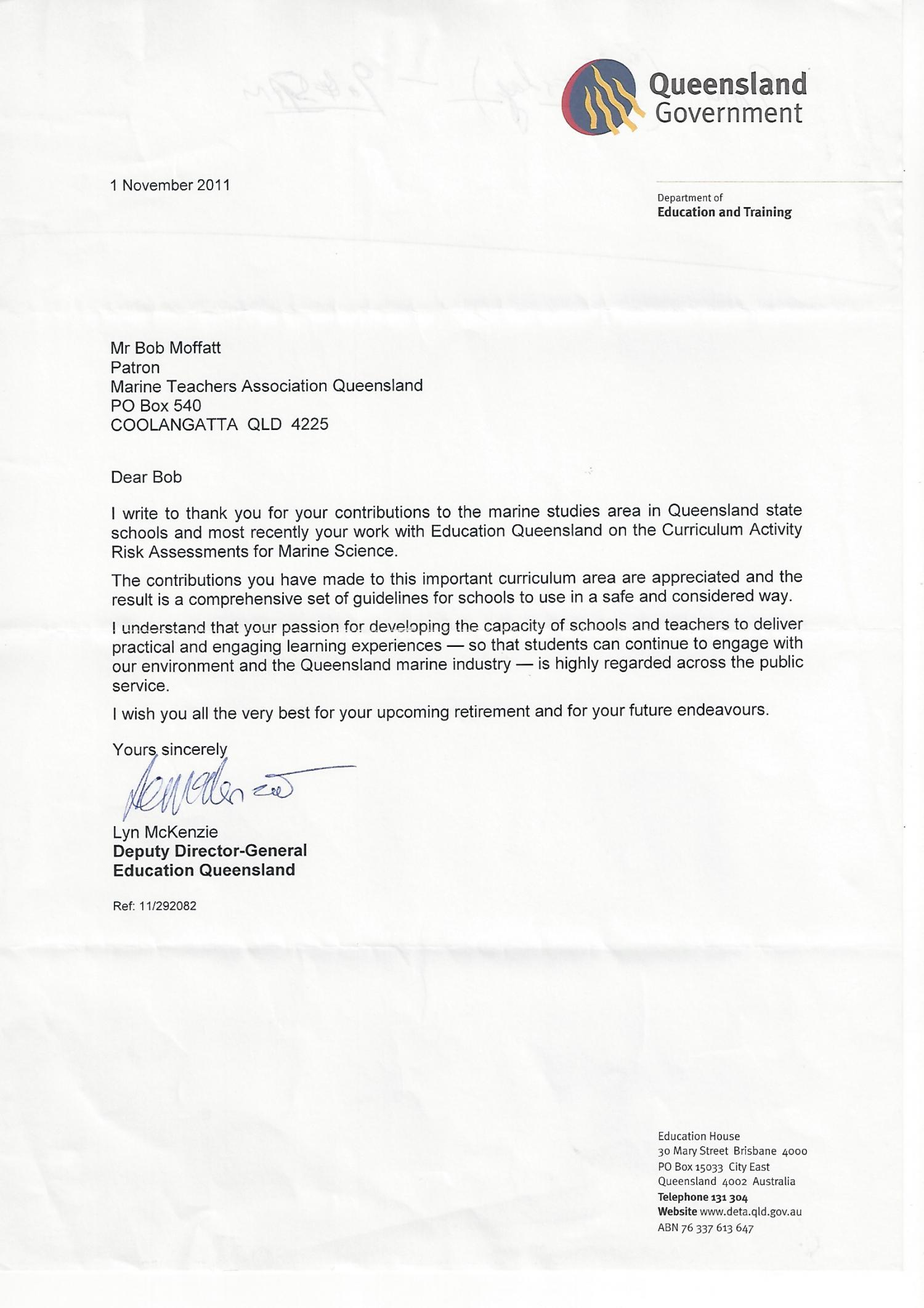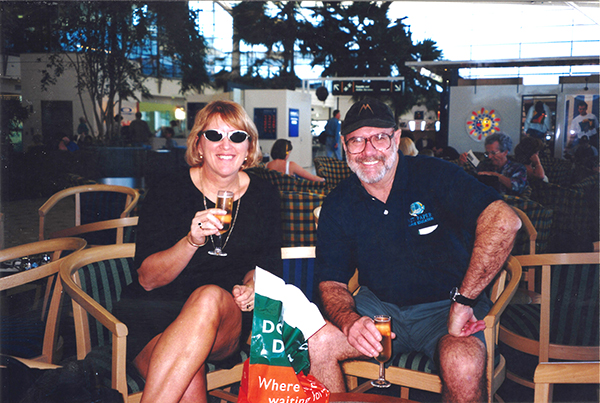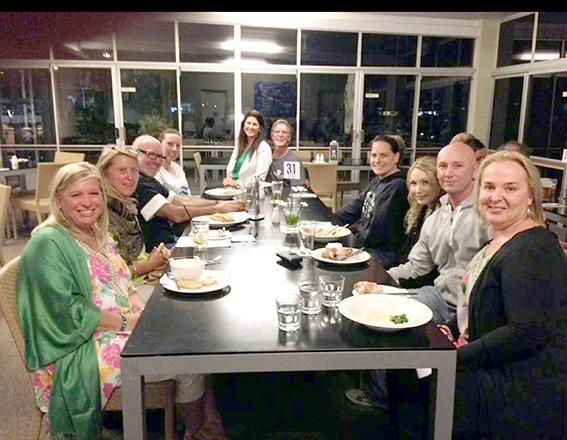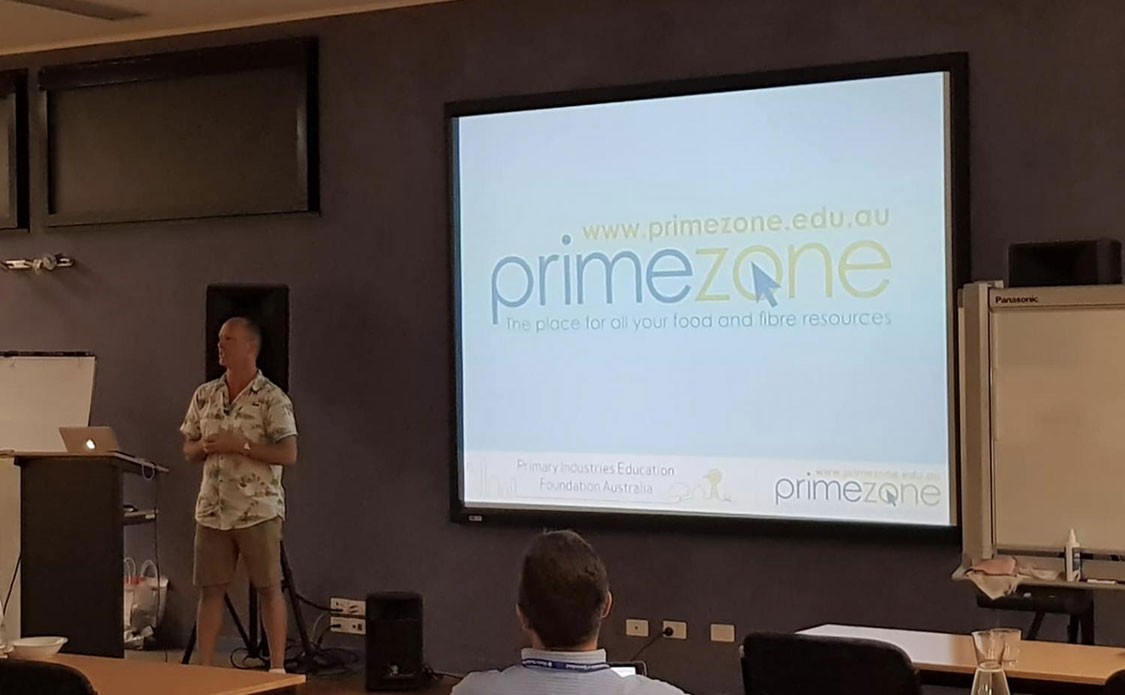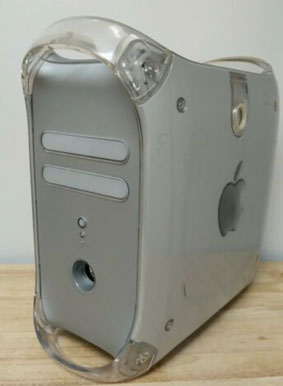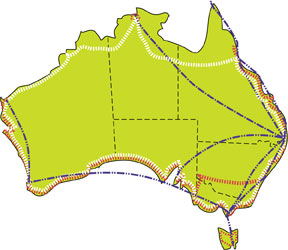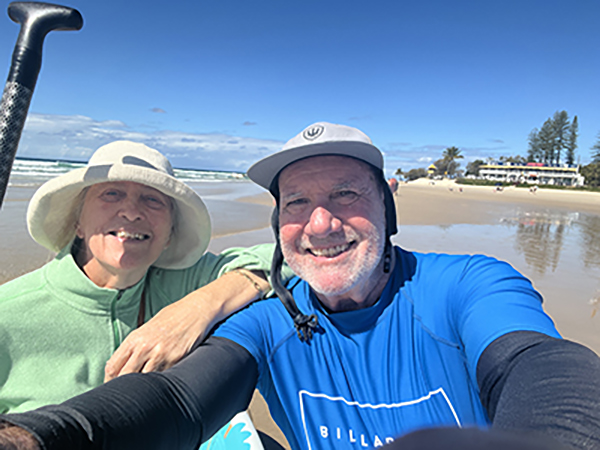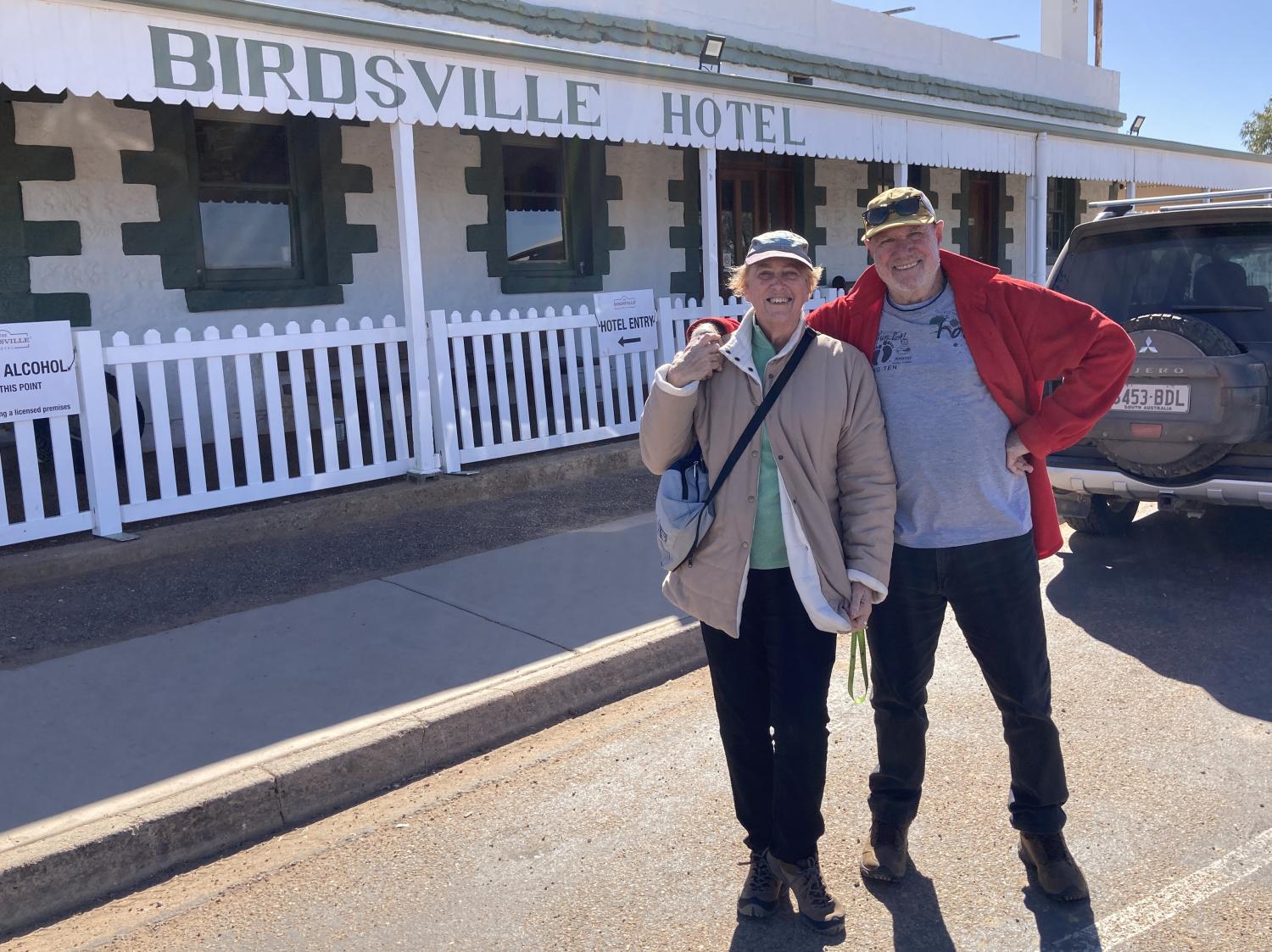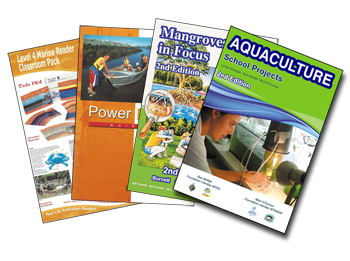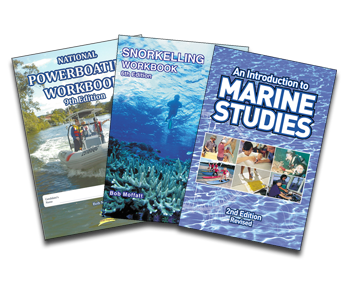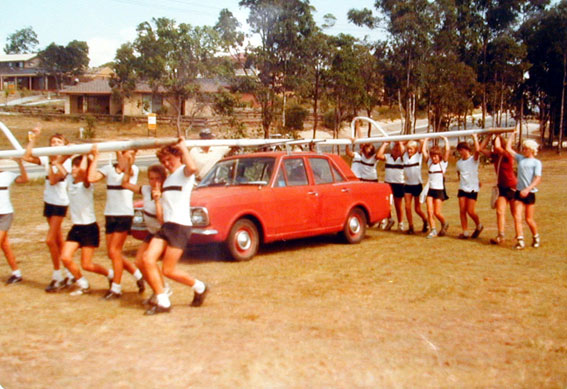
My Year 9 Science enrichment class - we had a special relationship
Benowa (1982 – 1986)
In short
1982-1986
- Equal transfer to brand new Benowa State High School as first Science SM
- We move again by train and truck to the Gold Coast and build our first home
- Trial STAQ marine science oceanography, snorkelling, navigation and boating notes with junior classes
- ROSBA mandates specific objectives into all school workprograms
- Invited to write Marine Studies Syllabus - huge milestone for Marine Studies in Australia
- BSMSP project established and funds classroom notes for new syllabus
- STEP project funds schools to buy, BSMSP notes as well as boats and equipment
- Marine centre built at Benowa SHS, boats shared with local schools
- National conference establishes marine teachers network - MESA
- Take 3 months long service to Hawaii, California and UK to gather resources and ideas for classroom notes
- Establish school P&C business - Benowa Marine, to print and distribute notes to Qld schools
Acronyms and blue links
- STAQ Science Teachers Association of Queensland, BSMSP Brisbane South Marine Studies Project, STEP Secondary Transition to Work Project, ROSBA Review of school based assessment, MESA Marine Education Society of Australia, GCIT - Gold Coast Institute of TAFE.
- The links to the original publications are in blue.
After seven years in Gladstone, we were transferred to the Gold Coast, sold our Gladstone house and bought a block of land at Ashmore where we could see Ashmore Primary school.
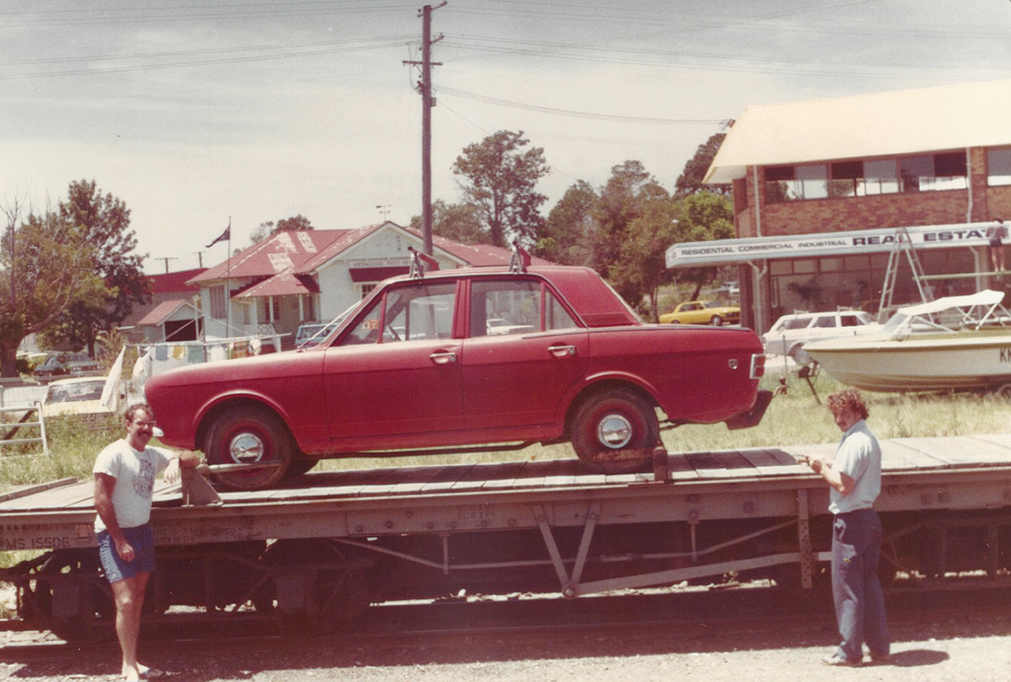
Moving back to the Gold Coast - same car, 3 paint jobs, 10 years later
Paula's father was a builder so we cut out a Dixon home floor plan from the Gold Coast bulletin and submitted it with an application to build. He worked on it flat out while we rented a house and by March we moved in just before the plasterboard when in. Big mistake as dust covered everything when it was later sanded, still we saved about two weeks rent.
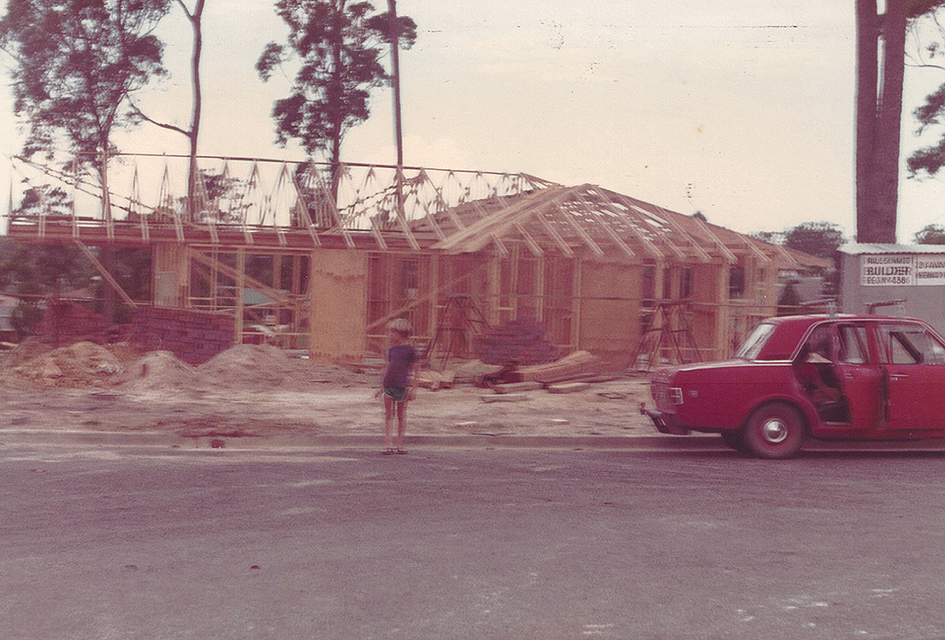
Our first house - the plan was cut out of the Gold Coast Bulletin

First personal computer - in the office cupboard behind the kitchen Ashmore 1985
At the back of the kitchen we built an office cupboard for my father's desk when I could write and close the doors when people came over.
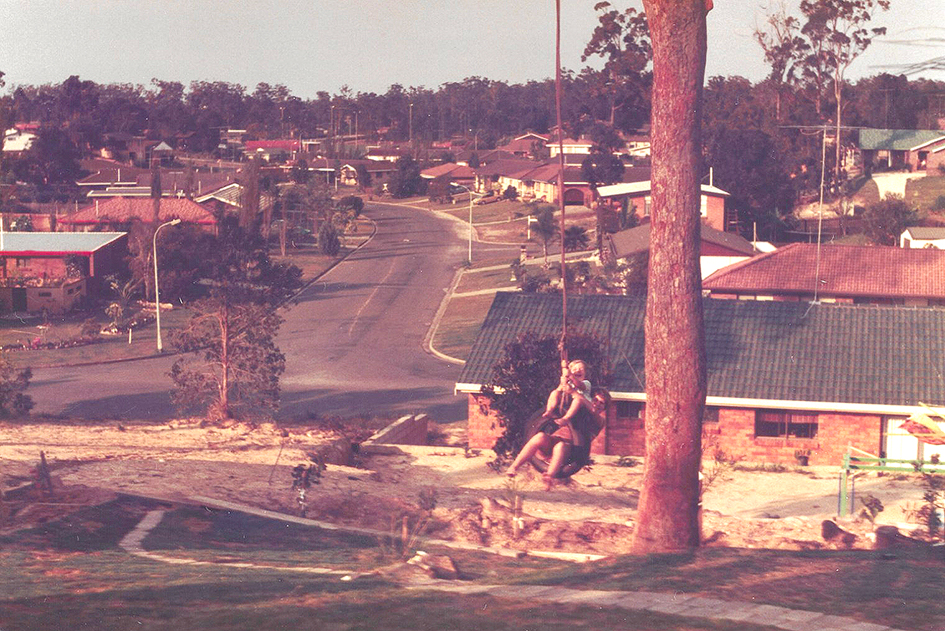
Our kids school was at the end of the street - what a bonus
All our children could walk to school and the shops - a huge benefit from Gladstone where we lived 20 mins out of town with one playing soccer and the other rugby league at different times and sports fields.
The benowa publications
These publications were made possible by STAQ and printed on the offset press in the Brisbane Education Centre. They were used by my years 9 and 10 classes to see if the content made sense and the activities helped the kids understand the concepts I was trying to get across.
How could they object, trips to the beach, Sea World and snorkelling in the Broadwater and later trialling boating and camping with hired boats from Jacobs Well to Stradbroke Island.
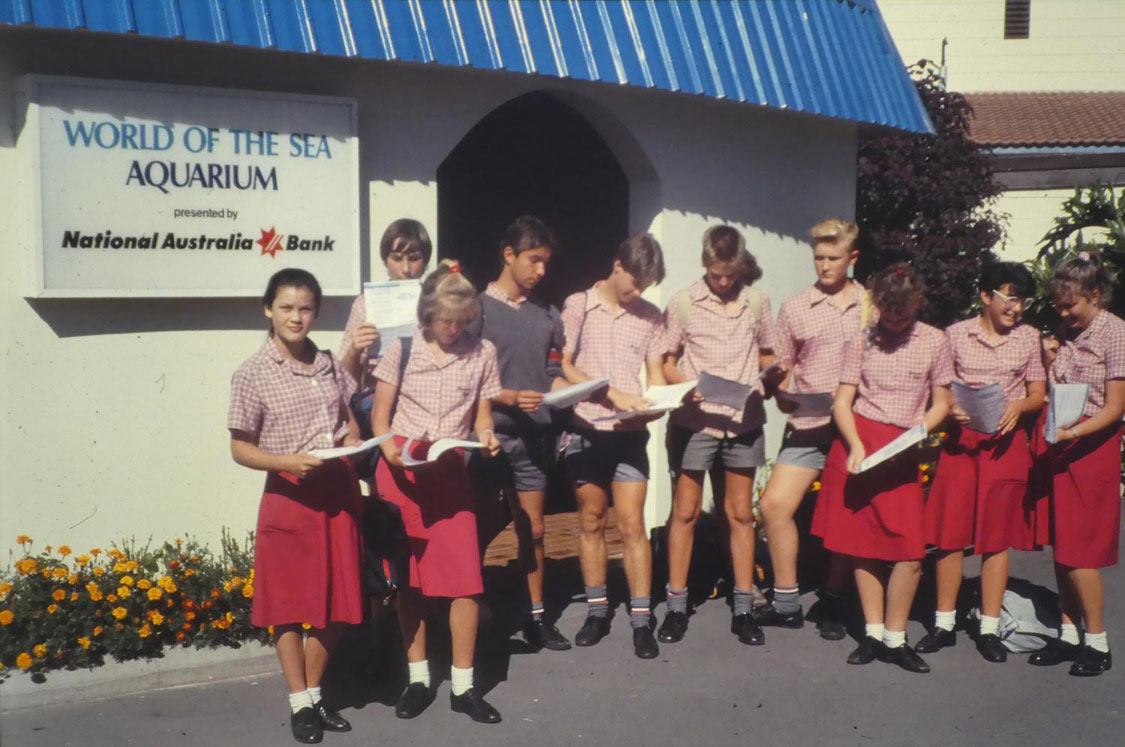
My Year 9's on excursion to Sea World 1982

My year 9 science enrichment class beach erosion study high energy coastline 1982

Year 10 Boat hull and marina excursion Coomera 1983
Publication 5: STAQ Coastal and Estuarine Biology
32 pages of trial classroom notes
These followed on from the Gladstone ideas and centred around trips to the local trawler bases at the spit and sand erosion on the beaches. The plankton trawls combined fish, prawn and crab larvae ID with the final results of adults caught offshore from Southport.

A study of benthos first involved a trip to the local trawler base to research how prawns and bugs were caught.
Tasmania provided a gold mine of classroom activity ideas from the field study centres of California such as jelly fish arm analysis, pressing seaweeds, poke poling, fish ageing, fish printing, fish mobiles and crab painting activities. These combined with plankton collection identification, analysis and dissection as well as model making and cooking. Fish were filleted meal and cooked on open fires at the back of the science block.

Students cooking fish as part of fisheries biology on open fires at the back of the science block
Publication 6: STAQ Coastal physics
32 pages of classroom notes 1982 trial
When I was 12, my mother said that if I passed every exam she would buy me a surfboard and guess what - I did. The dedication in the STAQ notes reads to great days at the Alex - which was the fun times I had with the surfboard at Alexandra Headland on the Sunshine Coast and hence the saying - Only a surfer knows the feeling. How true.
So I finally got an opportunity to write about something that was my passion as a teenager and I called it Coastal Physics.

Measuring wave length with a ripple tank. You spun the wheel till the waves stopped to measure wavelength.
The publication had everything and used the famous tide model introduced based on the work of Roy Jenkins FUSE Australia
Publication 7: STAQ Estuarine chemistry
42 pages of trial classroom notes 1982
I wanted to make chemistry relevant, and set the tasks such as designing a bottle to collect a sample of seawater from a 3 meters below the surface. Having no boats, the excursion was then a number of BBQ pontoon boats that were moored in the Broadwater to collect their samples.
Other content included salt water chemistry, the nature of seawater as well as chemical tests on sea water, materials resistant to corrosion and a visit to a local marine supplier to learn what was for sale.
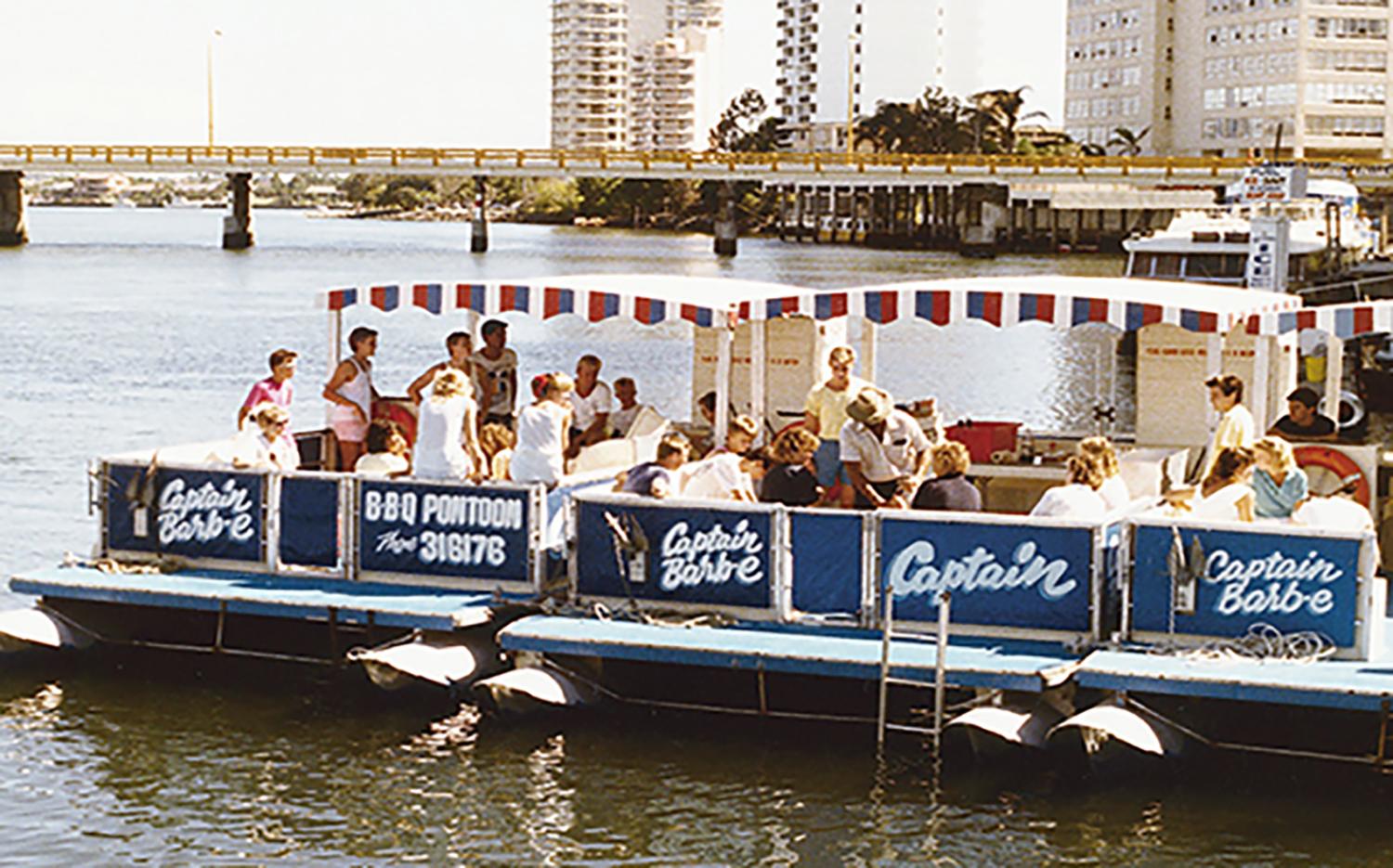
Year 11 Estuarine chemistry field trip Surfers Paradise 1984
Back at school we had to develop a test for salinity so we trialled using small eye droppers with silver nitrate to get a colour change in an indicator with their sea water sample. The philosophy was to discover the ressults in small groups as opposed to having one big accurate meter whcih no-one got to touch.
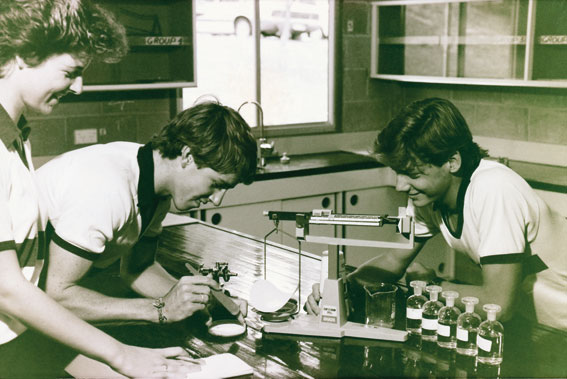
The eye drop salinity titration trials Benowa Science Block 1984
This then set the start of the set of notes which then looked at many of the other set of parameters I had learnt from Allistar in Tasmania.
Publication 8: STAQ Field methods
22 pages of trial classroom notes for a 1982
It was time now to put all these together as this became the fun part of marine science. The publication describes what we did with bits of drain pipe, duct tape, brick weights, rope and flags to make current drogues, tide gauges and wave swashes.
Content areas included small ships forecasting, boat safety, knots used and plumbers duct tape so you don't loose equipment, current measurement drogues, sediment corer and sample field study worksheets. Activities included home-made water collection bottles, tide measuring poles, secchi disks and current drogues

Home made drogues and secchi disks
Publication 9: Geology and navigation
74 pages of trial classroom notes
My idea was to combine the bathymetric features of a chart with the geological features of the coastline and ocean bathymetry. This proved to be an incorrect assumption so had to move these ideas to Coastal Physics. However the idea for a Hypothetical Bay was born where the teacher would have an A4 navigation chart to run off as many copies as they liked.

The first Hypothetical bay, Paula wrote the names in as I had such bad handwriting
The use of inexpensive set squares cut out of cardboard was used in conjunction with the A4 chart, so here you had an activity where each student could work on a project with at least 10 activities - A winner.
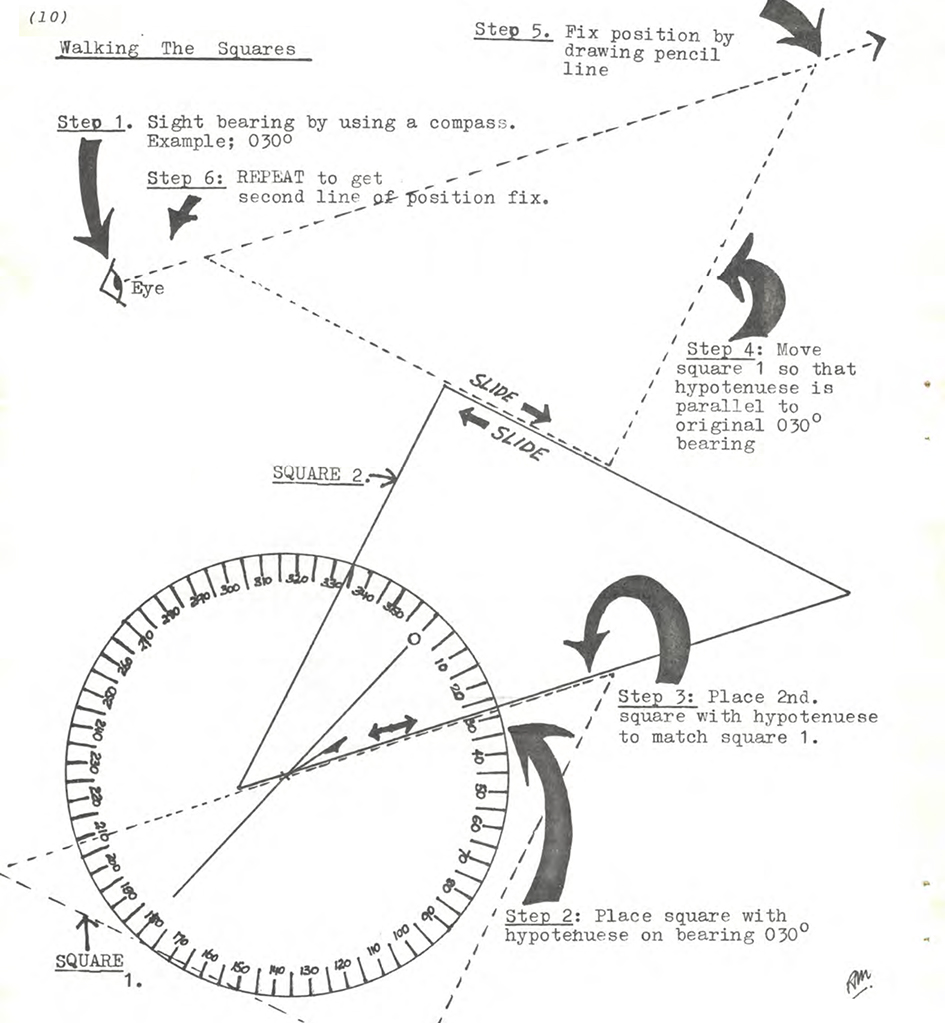
Walking the squares using bits of cardboard on an A4 photocopy - $11 cents per student
The bathymetric box activity was one from the US collection Allistsar lent me - still works as well today as it did when first written. The piece of stiff wire to mimic an echosounder is poked through a square of pegboard to work out the contours of "the ocean floor". Students then draw up a chart of latitude and longitude and add the depths.
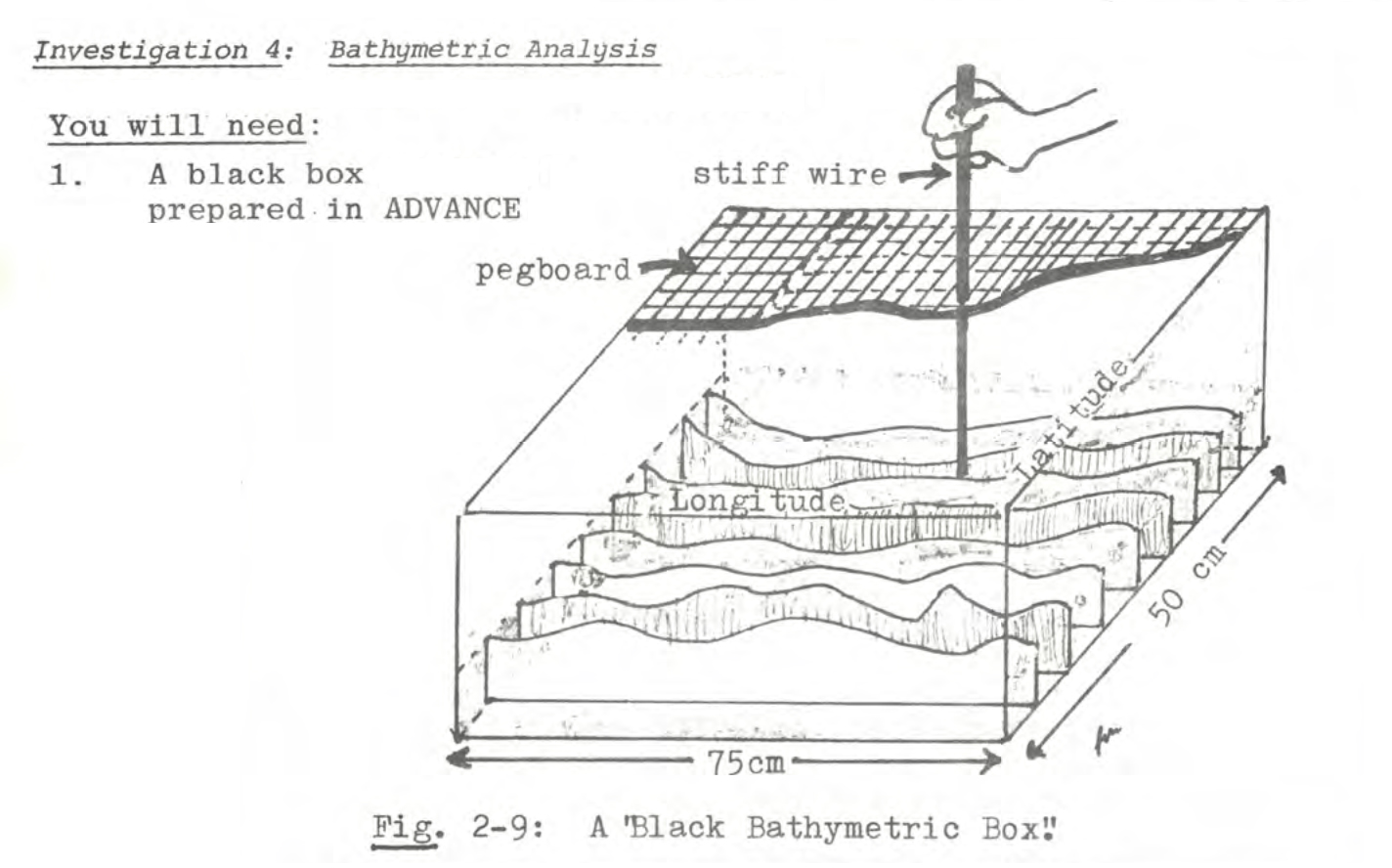
For the practical side of navigation I met Geoff Simkins from the Darling Point Special School who had repurposed an old Manly ferry so his students could teach navigation to visiting schools. Geoff added to my navigation knowledge of Moreton Bay and it was great to see my year 11's learning new skills from special school kids.
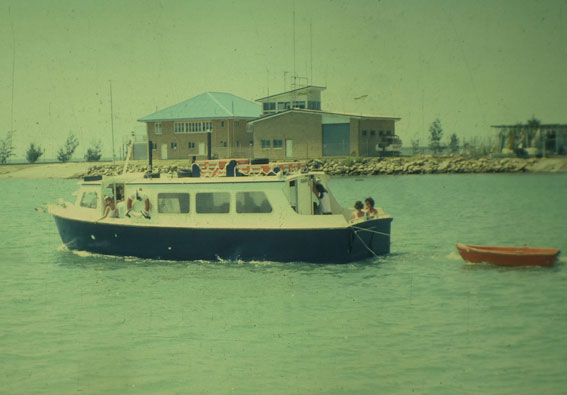
Navigation excursion MV Heritage - Darling Point SS Manly 1984
By the end of 1982 the first 5 STAQ notes had been written and trialled by whoever STAQ sold them to and it was off to conference to give my report to the STAQ council members.

STAQ Marine Science Publications 1983
These conferences were epic with over 100 delegates and always at Mt Gravatt College of Advanced Education (now Griffith University). I was always made to feel welcome and must thank Cec Burr, Cecily Gredden, Keith Lucas, Jack Marsh, Dave Tulip and Bob McAllistar to name but a few for making the publications a reality and later became part of the marine studies syllabus committees.
At the conferences I was able to meet some of the teachers who were using the notes, all of whom seemed to be supporting the idea of the marine science content and its wonderful activities.
Publication 10: Introduction to Boating
96 pages of trial classroom notes 1983
I had met this guy Boris Danilenchko, from Jacobs Well Field Study Centre who was building a boat using some grant he had wangled and was only to happy to add Benowa to his resume for further funding. So we partnered up for a challenging education experience for my year 10's and boating in small groups. Why not pack for a bush camp to navigate in small groups in a tinny to climb a hill for an overnight camp on a local island?
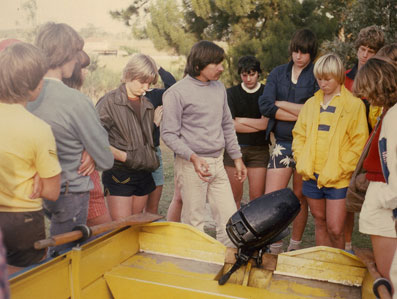
Jacobs Well FSC - Boris gives a boat safety briefing to my year 10's.
So we hired a set of tinnies and I set out with two other science staff to navigate to Slipping Sands on Stradbroke Island to beach the boats and then hike up the hill for an overnight bush camp - just like I did with the Year 8's in Gladstone. We then combined the oceanographic field methods at a set off the beach before we set out.
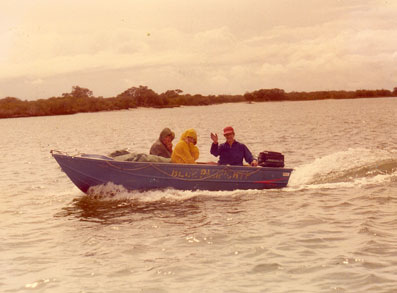
My year 10 Science enrichment class on hired boats from Jacobs Well
The boating notes also required the use of the Department of Harbours and Marine illustrations and content for boat licensing, and the local harbours and marine were only too happy to release copyright on these and help with school talks and safety advice.

Field trip water sampling methods South Stradbroke Island
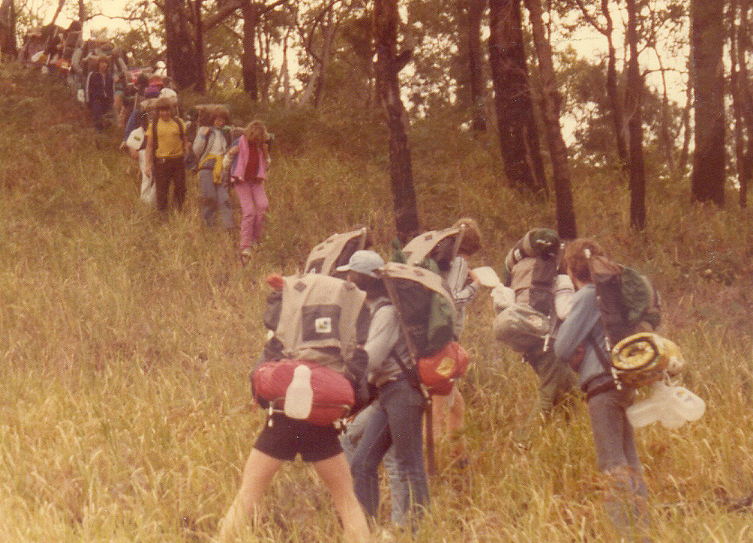
My year 10 class hiking back from overnight camp Stradbroke Island and then driving their boats back to Jacobs Well.
So the idea for a school set of boats was born, but how to get them, how many and where could they be stored? This was all about to happen in 1984 but first the 1983 notes had to be rewritten, and oh yes, how did I squeeze this in between by duties as a science subject master. Well the answer was delegation and total freedom which I gave my senior staff Ann Summers (Biology), Kev Hines (Physics) Dave Reid (Chemistry) and John Howard (Multistrand Science).
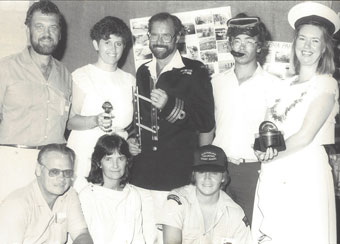
Some of my wonderful Benowa science staff.
My two lab assistants Sue Oates and Kelvin Rodgers ran the labs and I could not have been luckier to have such a wonderful staff. I failed in my supervisory role as a subject master, and was lucky the other staff all pitched into help. The science staffroom fridge always had beer and wine so when I offered a beer to our new principal that year, I did not get any bad vibes. Mel Phillips was extremely supportive and must have drove him mad at times, but we forged ahead with many innovative ideas that complimented the marine program.
The 1983/4 STAQ revision and reprints
The STAQ notes were also selling very well with money going to conferences and workshops and needed to be revised and reprinted. I've got no idea how many sold, but years later teachers would tell me about the piles of old STAQ notes at the back of the science storerooms from this era.
Publication 11: Coastal and estuarine biology STAQ
Publication 12: Coastal physics STAQ
Publication 13: Field methods STAQ
Publication 14: Navigation STAQ
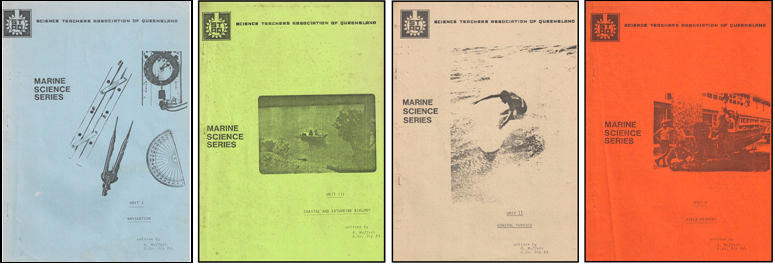
Revised STAQ Marine Science Publications 1983/4
Publication 15: Ed Qld Marine Studies Syllabus
37 pages, ED Qld publication. Topics ranged from navigation and boating to coastal studies, snorkelling/diving and maritime history. The last topic was boat licence and excursion which opened up the way for boating in schools.
During this year I was asked by the Director of Secondary Education to write a marine studies syllabus as part of a whole suite of others funded by the Secondary Transition to Work Program (STEP). The premise of STEP was to develop outcomes and work programs to allow year 11 students to receive an education for work and not uni.
For me this was the key to open the door to marine education for all those other teachers who had heard of the Benowa program. It was about this time I met Cyril Connell who was South Coast Regional staff inspector and later Brisbane Broncos legend, who supported me to take my STAQ notes and ideas further. So I took the ideas.
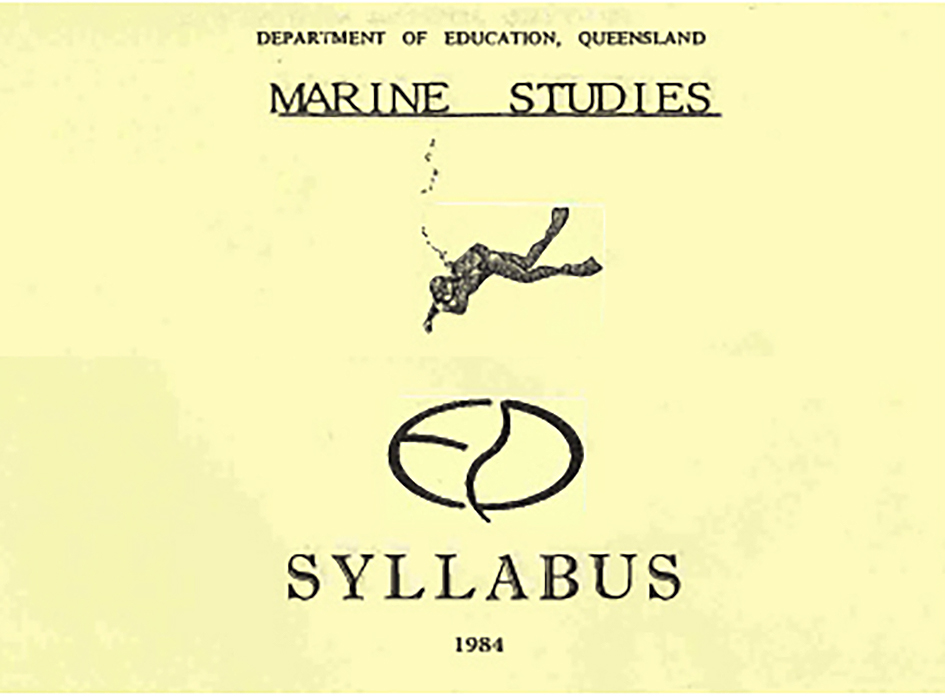
First marine studies syllabus in Australia 1984
Everyone who knew Cyril has a favourite Cyril story, so here is mine. We wanted to get year 11 students into doing TAFE subjects and met heaps of resistance. One issue was students did not have safety boots, so he organised four taxis to pick up these students from Benowa SHS, and drove to army disposals at Southport, had the students fitted with correct sized boots and then drove back to TAFE. Here he met the director in charge withe the students and said something like, "Well here they are with safety boots, do you have any other issues?" Cyril was the master of cutting thru red tape, so when it came to boating, he solved many issues with the local Harbours and Marine for me. While doing school inspections on the Gold Coast, he would stay at a motel at Miami and one tim, rang Paula at home to see if I could come over for a meeting at 5.30 to discuss marine and supported my application for a set of school boats from the STEP program. And so began school boating in Queensland.
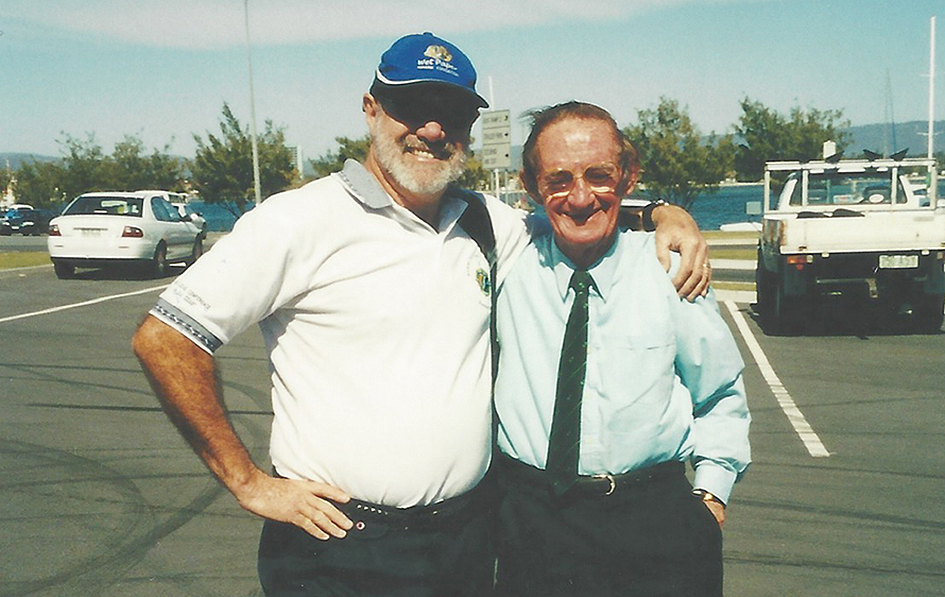
Benowa SHS named their boat "Cyril" in honour of the famous man and my mentor.
Cyril went on to become deputy director of Secondary Education before retiring, going straight to the Broncos with a seemless transition and sadly passed away in 2009.
Brisbane South Marine Studies Program (BSMSP)
I managed to save the first information sheet outlining how the program operated.
Archive file: Brisbane South Marine Studies Project Information Sheet No 1
The first boats and motors arrived at school in 1984 and were stored in the plant room behind the science block, but we needed a building.

Unloading boats behind Benowa Science Block 1984 (Ed Qld STEP grant to BSMSP)
This took a fair amount of convincing but since we had a syllabus, matching set of notes, equipment stored in a science building, support from the Gold Coast Mayor, local water authority, regional and head office and staff to match, and Minister for Transport, it was a lay down misere.

John Golby Minister for Transport. First boat licences to Qld students 1984

Official launch by Brisbane South regional school inspector Jim Lawson 1984
By now the TAFE - Secondary model was established and my wonderful lab assistant Kelvin Rodgers, organised for the ground to be turned by students from the Bob cat course in late 1984. The P&C helped with the plans Pro Bono and the president Don with water and sewage. We worked over christmas to get it done along with a local builder and wired by electricians from the P&C.
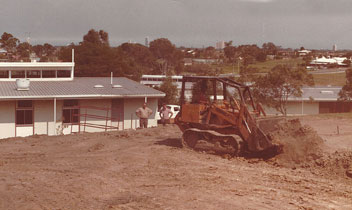
Construction on marine building began using TAFE bob cat drivers course 1984
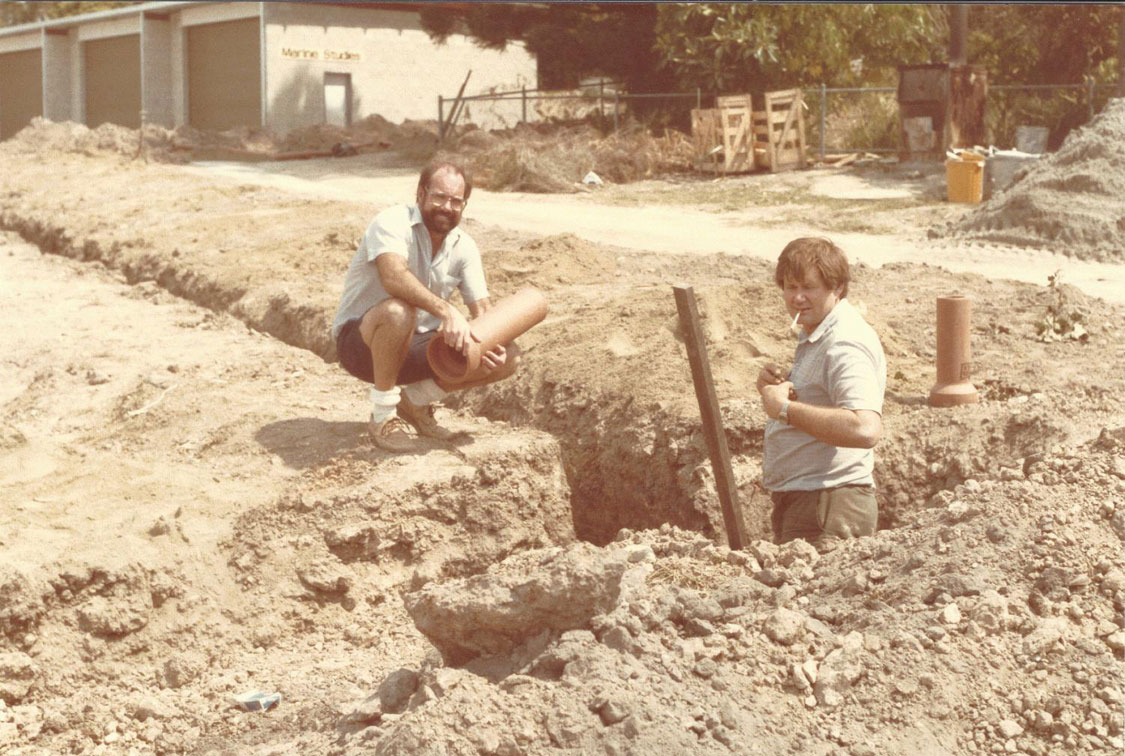
Sorting sewage pipes for a set of showers for the new building Benowa SHS XMAS 1985
By March we had finished. Jim Sheffield from TAFE found an old car for me and offered to service it under his mechanics course. Another set of grants was used to buy a bus to take other Gold Coast students to TAFE for the developing transition to work courses.

March 1985 - P&C groundsman's store to the left, classroom middle and storage right.
The building was launched by Jack Guy in April 1985 who was director of secondary education in Queensland. When he opening the local press quoted him as saying "that it was Education 2000 in practice - involving the integration of teaching staff, the support of the community along with assistance from specialist areas within TAFE." So it was good for him and good for me although I did not realise it at the time.
One big mistake I made was to invite the Director of Secondary and the Regional Director to open a building at the same time! So after Jack had left we had a special afternoon tea with beers, sausage rolls and party pies with our Regional Director at the time - Ted Duke.
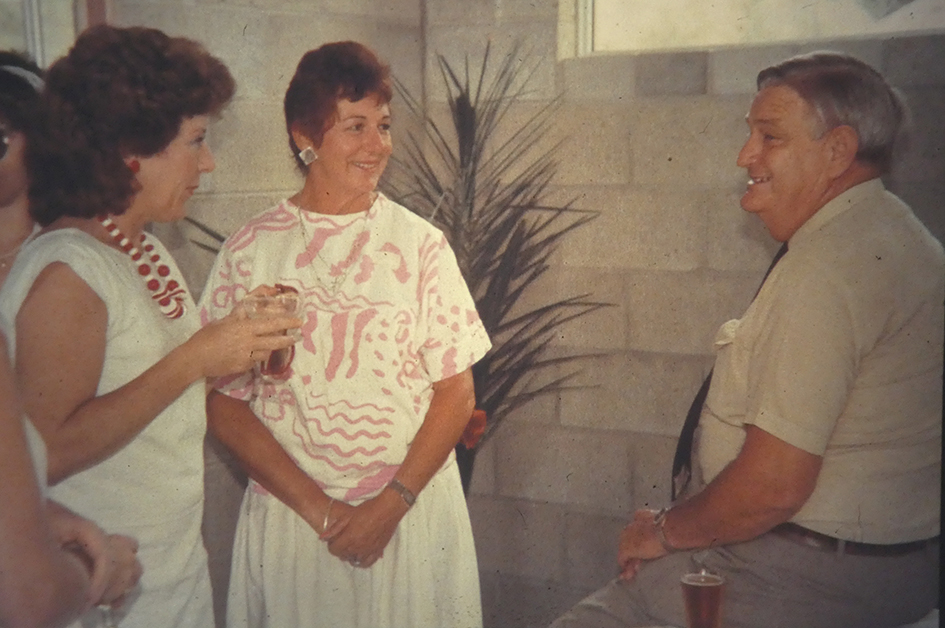
Senior mistress Carmel Gomm, Jill Agnew and Ted Duke at the opening
There was so much ground breaking history at the time and I wonder sometimes how we did it all. Students were allowed into TAFE, transition courses were developing to work and as a result of the building and all the people who were there - the idea to develop a syllabus in Marine Studies was accepted by the Board of Secondary School Studies.
The boats were shared amongst schools, and we were even able to employ one of our graduating yr 12s to help run the program.

Peter Montgommery - our schools boat co-ordinator.

Keebra Park School boating as part of BSMSP 1985
Now that the boats and motors were out of the plant room, we had a place to print the notes. It was then I met Rob Heaney from the P&C who ran a local printing company. As he was upgrading all his printing machines, he donated one to the school along with a guillotine for trimming collated sheets of print. All I had to do now was secure my copyright from STAQ so that I could print under the BSMSP who obliged without question resulting in the following publications:
Brisbane South Project notes
Publication 16: Estuarine chemistry 1985
Publication 17: Coastal Physics 1985
Publication 18: Camping 1985
Publication 19: Fisheries biology 1985
Publication 20: Sampling methods 1985
Publication 21: Snorkelling 1985

Some of the BSMSP marine studies series notes
The P&C set up a project that had a small student business attached that would sell my notes to other schools to provide funds to revise, edit, trial and pilot the curriculum ideas from the syllabus. The STEP project then allowed schools to use funds to buy these notes which then funded seminars, workshops and printing of materials.
A workbook for Queensland Schools
Schools wanted to see what we had done on the Gold Coast where a group of schools shared a set of boats and so I just ran off and sold my notes from the school business. The following publication is what my staff, local teachers and the Jacobs Well Field Study Centre was able to achieve.
Publication 22: QLD Marine Studies Implementation Guide 1985
This was a guide on how to implement marine studies in Queensland - Sample work programs, excursion ideas and exam questions. This was the publication was later used by schools to gain funding to start their own school programs.
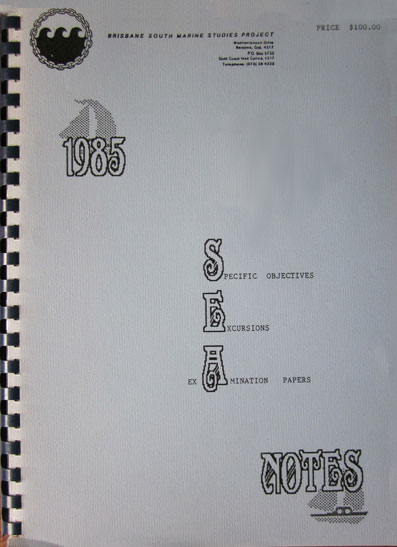
Workbooks for Queensland schools Brisbane South Marine Studies Project (BSMSP) 1985
MESA
Sometime in 1985 Benowa had a new principal Ken Gilbert who had extensive experience in staff development and networking - how lucky for he could see what I needed to get things moving.

Bob and Ken Benowa reunion 2006
The first thing to do was to run a conference and mobilize a network of educators to take the subject to the next level.
Following a successful meeting in Victoria by a small group of marine educators at the Queensliff Marine Centre in 1984, Ken helped me to organise a national conference at the end of 1985 in Broadbeach. The following publication records that plan, the speakers and outcomes of this conference. In short the conference formed MESA - The Marine Education Society of Australia.
Publication 23: MESA Foundation conference papers 1985
Conference papers from MESA foundation conference at Broadbeach. 96 pages
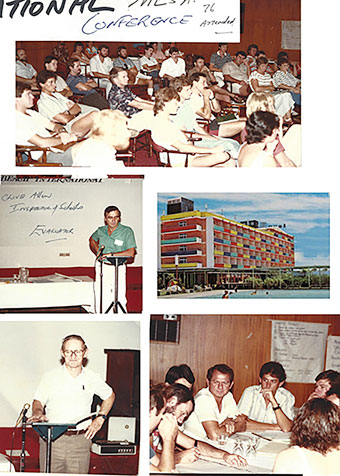
Some pics from Marine Education Society of Australia (MESA) formation conference Lennons Hotel 1985. Clockwise from top - Clive Allen (Evaluator), Lennons 1985, some of the originals planning the future of marine studies, Cyril Connel.

1985 News article lobbying the Board for a new syllabus
So by the end of 1985, Marine Studies was established with a model building and resources, a recognised set of notes that could be used to fund programs in schools, a network of teachers to implement the subject, an inservice program outline manual and the possibility of 3000 students to benefit from it in a yet to be written Board of Studies Syllabus.
1986
MESA regional groups form
Following the 85 MESA foundation conference things really stareted to move with the teachers from the conference forming their own regional groups. PEP funds were available for workshops and seminars and a new breed of marine leaders emerged with whom I made lifetime friends.
Long service leave (March - June 1986)
I applied for overseas marine research trip to the US like Alistar from Woodbridge did and got rejected.
However Paula says she has some money cobbled away, so take the whole family around the world using up all of my long service leave.
Looking back now I'm sure the impacts on the marine studies content and the wet paper books were as follows:
- In Hawaii I met Barbara Klemm at the University of Hawaii who taught me the activities of continental drift, reef formation and a whole host of oceanographic modelling activities. I also met Dr Sherwood Maynard from the who was later to stay with us at Ashmore who had a marine educator’s network and mailing list to die for. This guy knew everyone associated with marine in the US and shared all his contacts with me which was great for the new MESA network. Also got to surf Sunset Beach.
- In California I visited Monterey Bay Aquarium and met the teachers there and learnt about large scale acrylic glass for public aquariums, touch tanks and how presenters explained marine concepts to children.
- In Wales I met Bob Bond from RYA, and he showed me the boating programs they had developed to teach students. He gave me copies of the training log books especially boating (TL3), and so I had a framework for the syllabus boating, radio and navigation outlines.
- At Greenwich I was able to photograph the old navigation instruments and Harrison clocks which were revolutionary in their ability to allow ships to determine their longitude at sea and took many photographs that have been used over and over again in the wet paper books.
- Had morning tea with the staff at Grimsby TAFE and swapped stories of teaching navigation as well as gained huge an insight into how shipbuilding was taught. We had parked on the lawn and Paula decided to do the washing when the police arrived because they thought we were gipsies!
- In Europe we got to see where the D-Day landings were, the dykes of Holland and how the delft laboratories were used to build seawall defences and used to study waves. Paula was born in Holland and it was great for her to come home and benefit from her hard savings that managed to get us on this trip.

Hawaii, California UK 12 week-long service research trip 1986 - Paula did all the finances
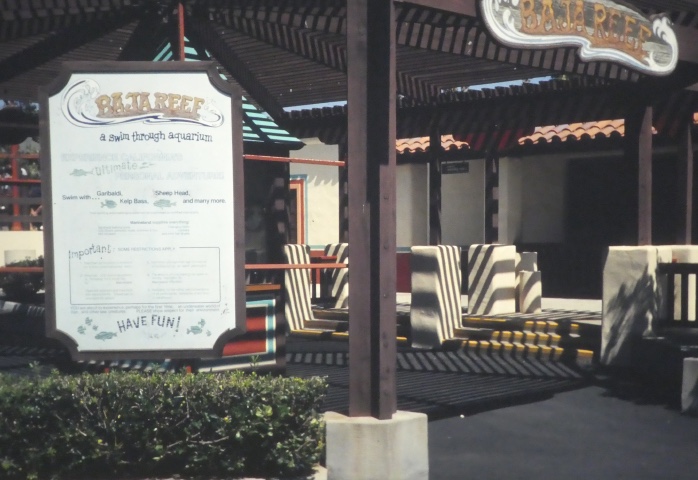
Artificial reef California Marine Land 1986 - Sea World was really interested in this idea
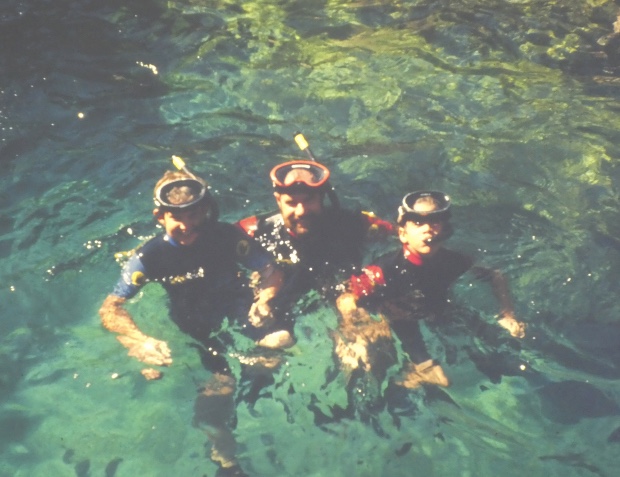
Snorkelling reef California Marineland artificial reef 1986
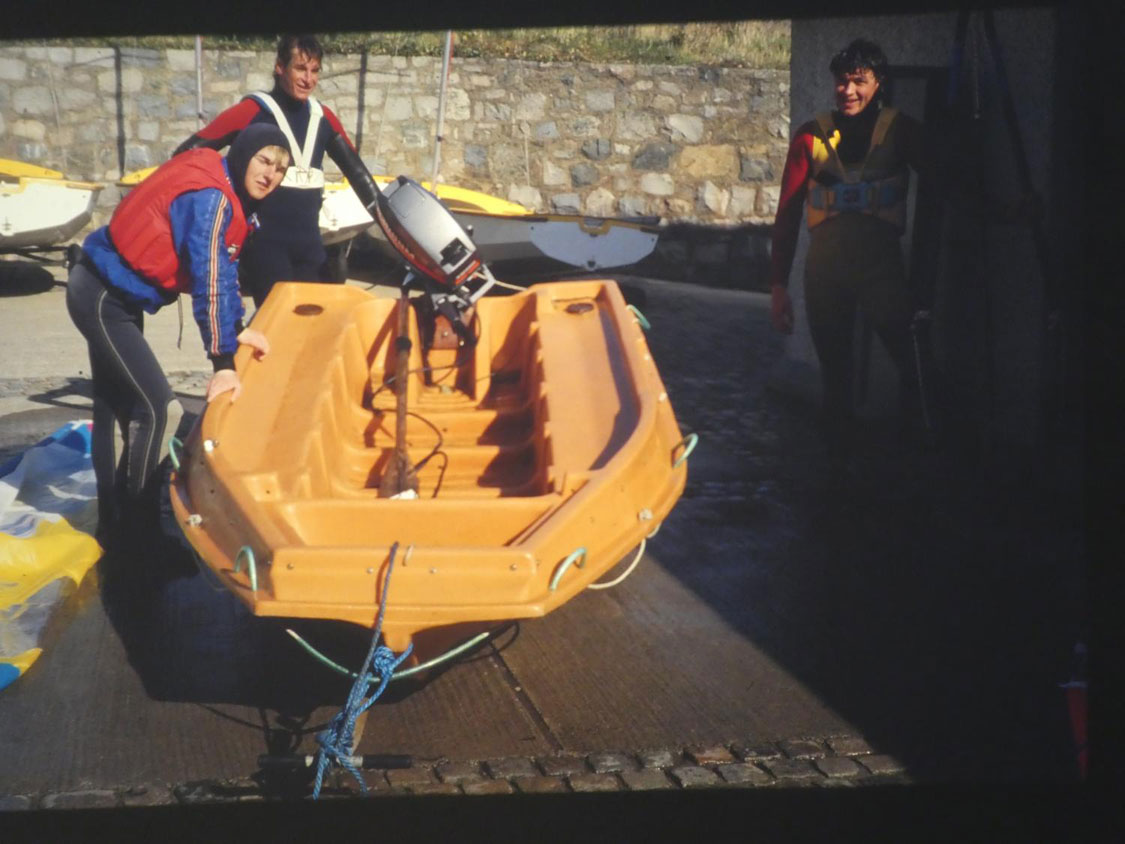
Marine Studies Wales - where the RYA TL3 course was taught - this became the basis of the Australian system 1986
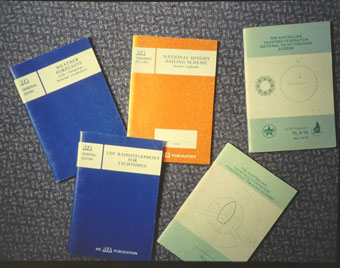
The log books that Bob Bond gave me from Wales which became the schools boating standards for years to come
So while I was away
Awards
So while I was away I got nominated by Mackay MESA branch and won a Castrol Sea Safety award 1986. The school sent my marine 2IC Tony Failes to Canberra to collect it who over celebrated and left he award on the plane at Coolangatta airport. Now this is 1986, but the airline stewards hear a ticking sound in the overhead locker after all passengers had left the plane and Tony was carted off by the AFP to do some explaining.
The award was a really nice gesture even if I did not get to receive it and over the years I’ve managed to get a few more, but that one was the best.
Delegation
Now while I’m the topic of delegation, I dobbed in a fellow staff member Sue Cerato, to represent me again in Canberra to address the Academy of Science on the work we were doing in Marine Science education at Benowa. Sue was pertified, and the only advice I could give her was to basically repeat the marketing spells I used to give over the phone that the staff could hear on a daily basis when I actually made an appearance at school. Sue did a great job and can’t help reminding me when we meet at reunions of the trauma I put her thru all in the name of Marine Science. I’ve got to admit if my staff hadn’t joined me in the marine journey, I doubt the publications would ever have got off the ground.

Castrol Sea Safety award 1986 - nominated by Mackay MESA branch and left on the plane at Coolangatta
At the end of the year Ken was appointed a school inspector, but before he left finalised the paperwork for my 2 year secondment and so the real work was about to begin.

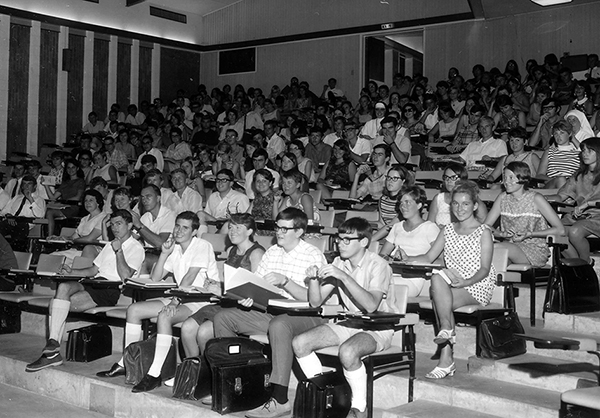

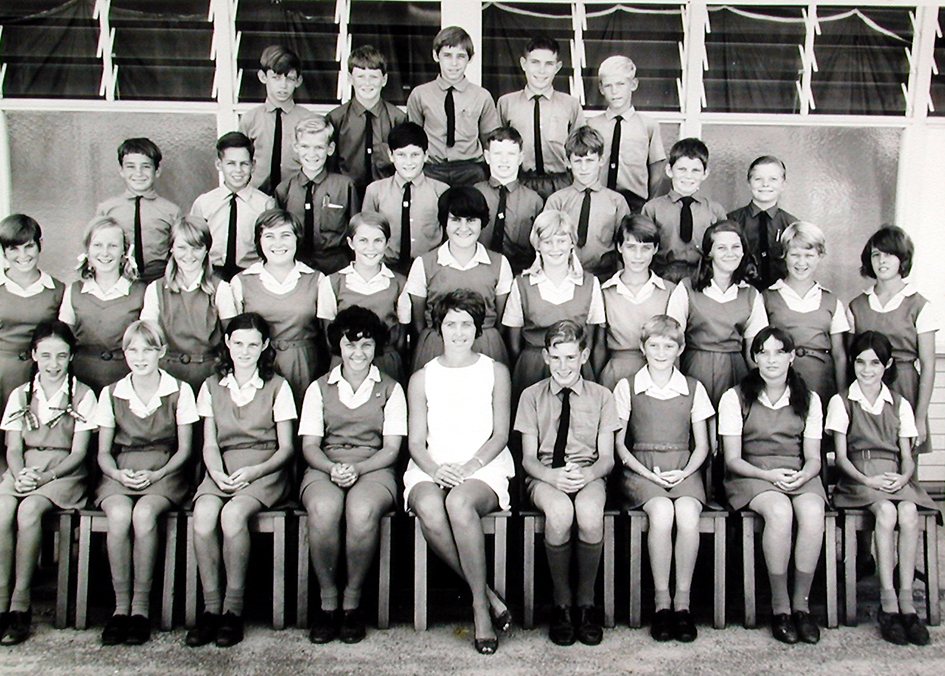
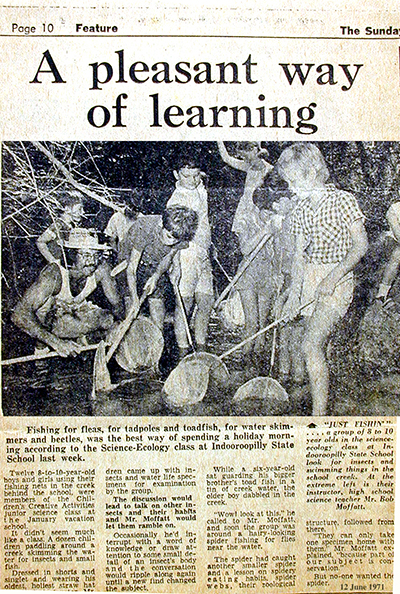

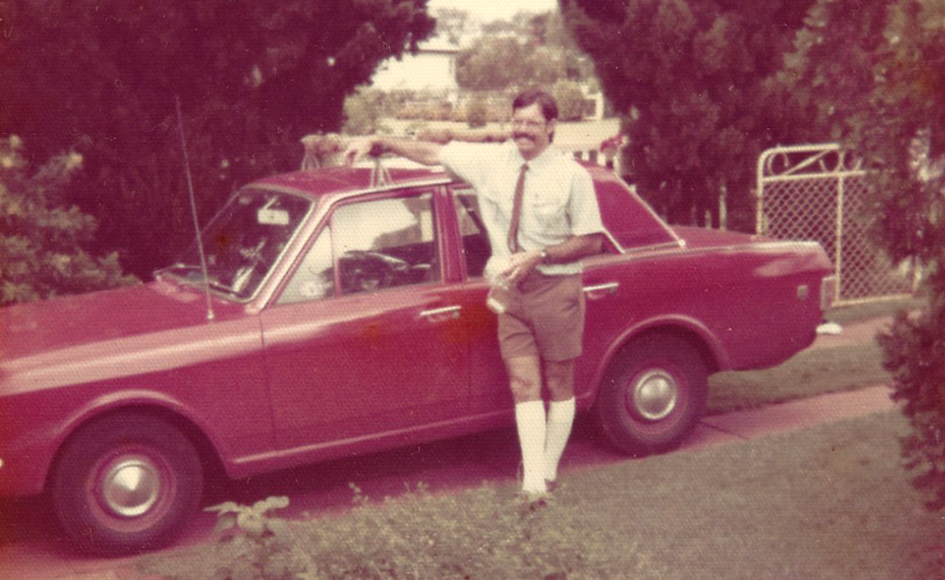
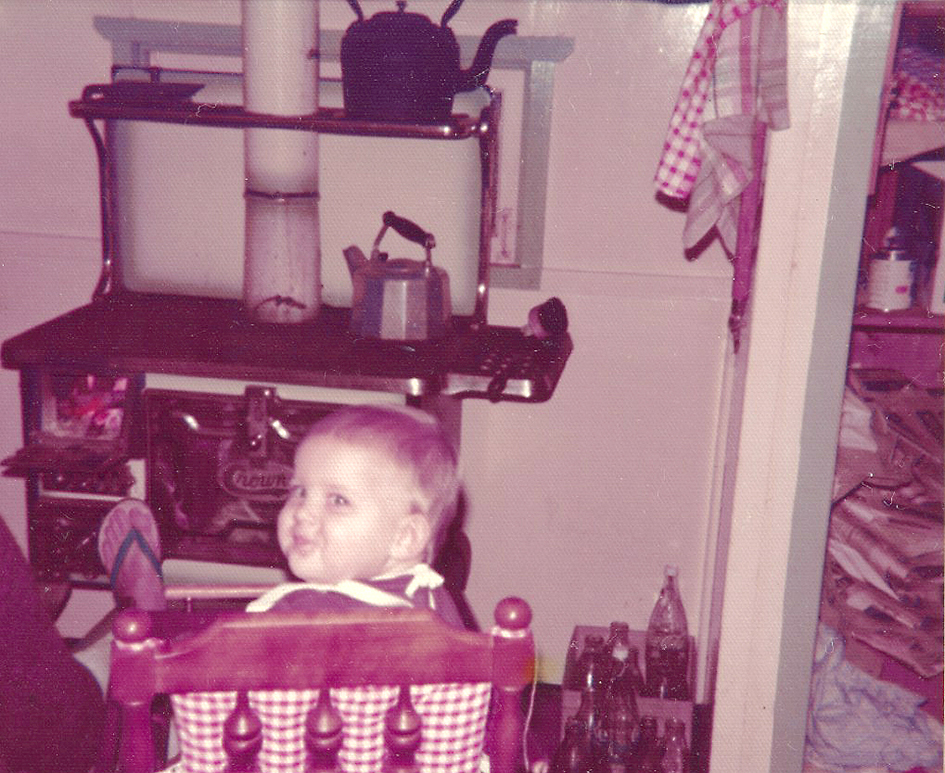
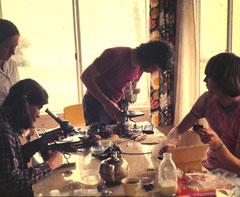
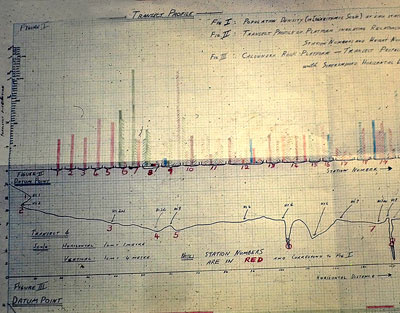





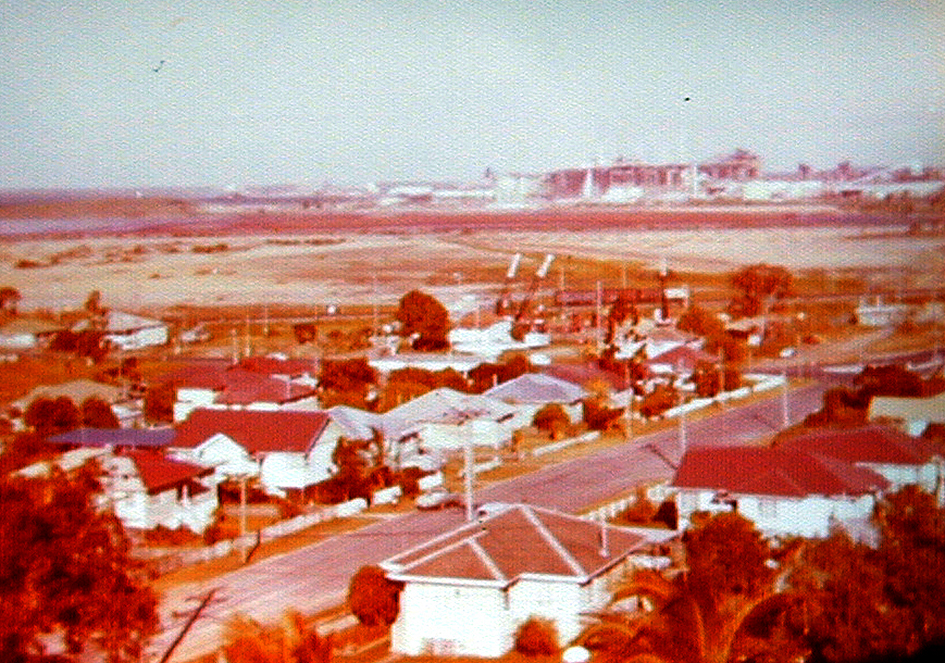


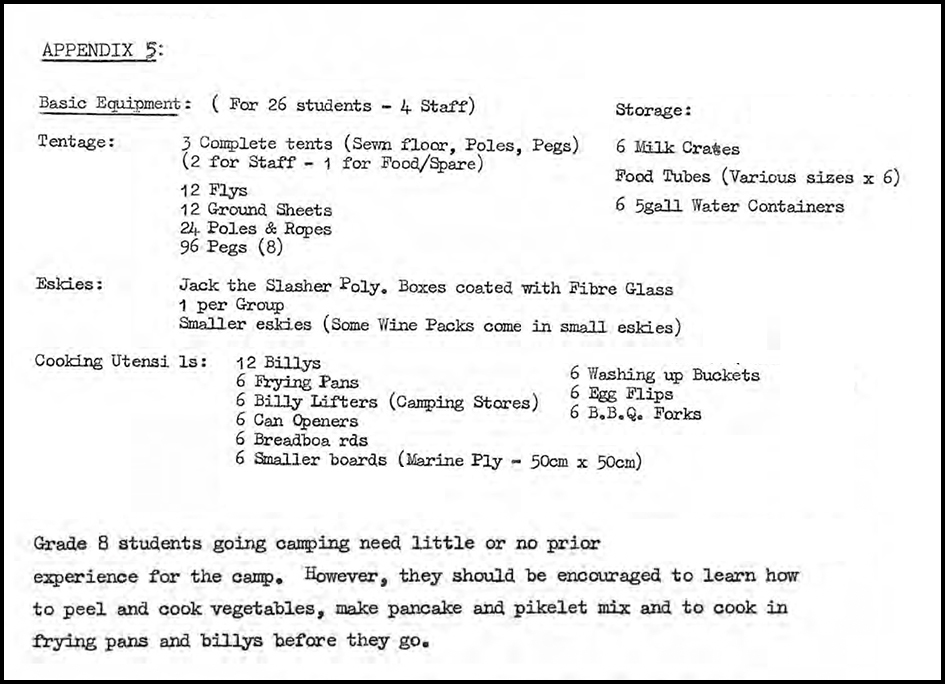
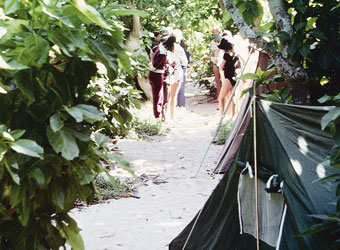



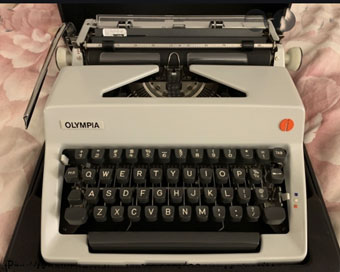
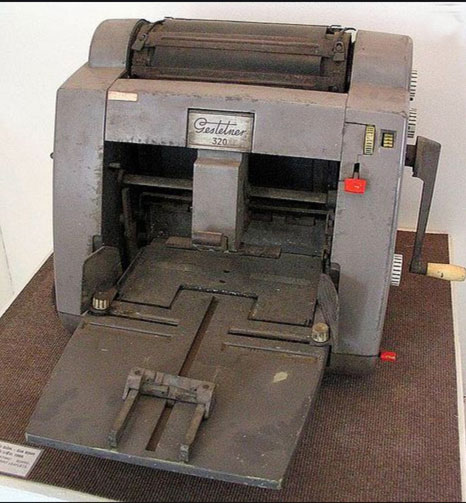
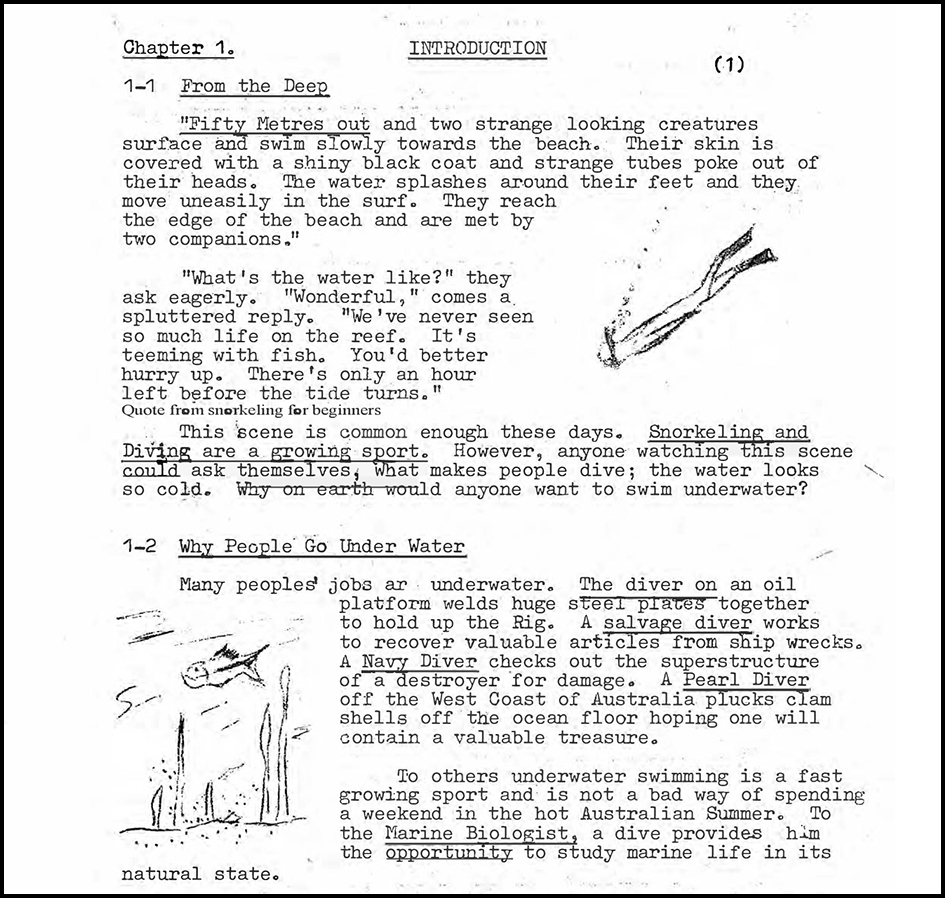

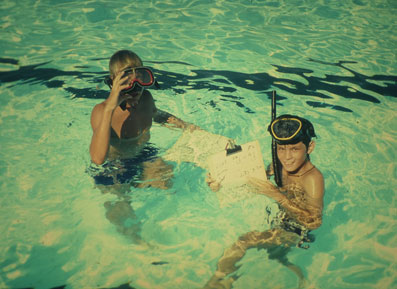


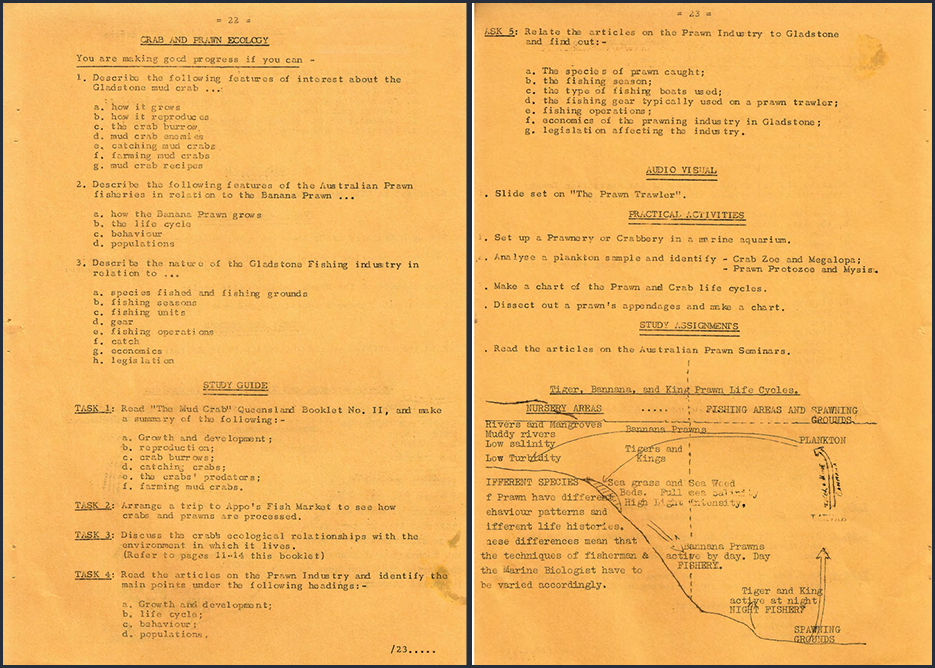
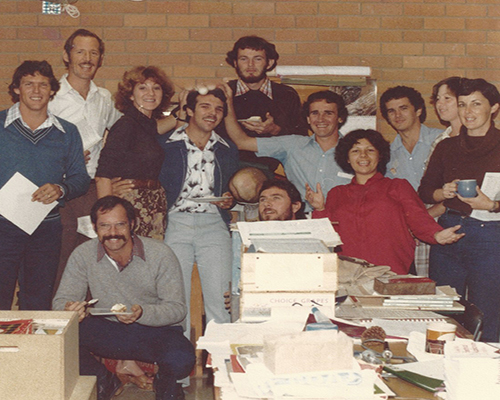

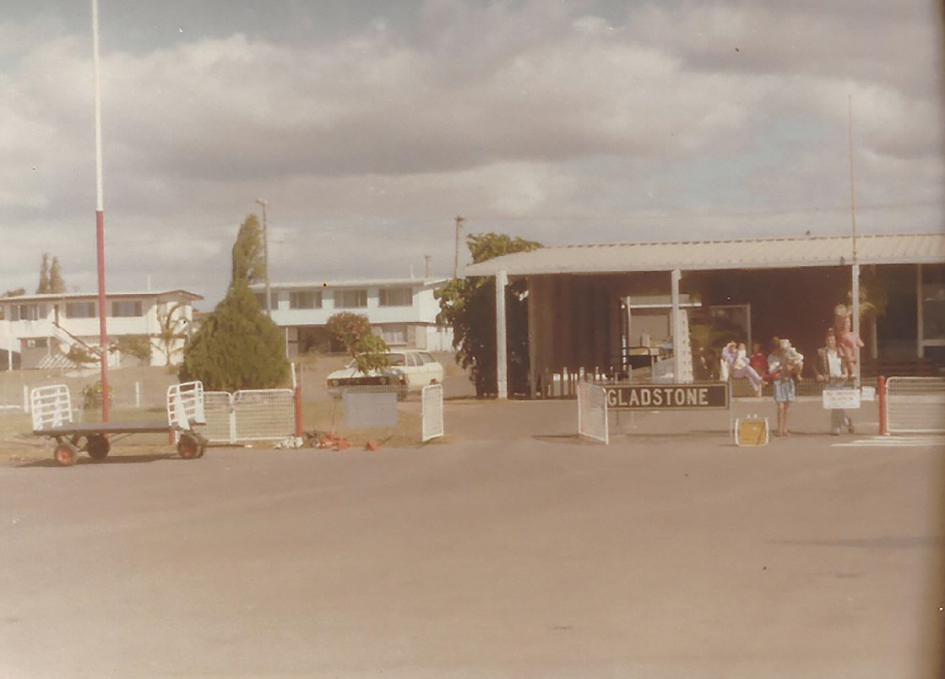
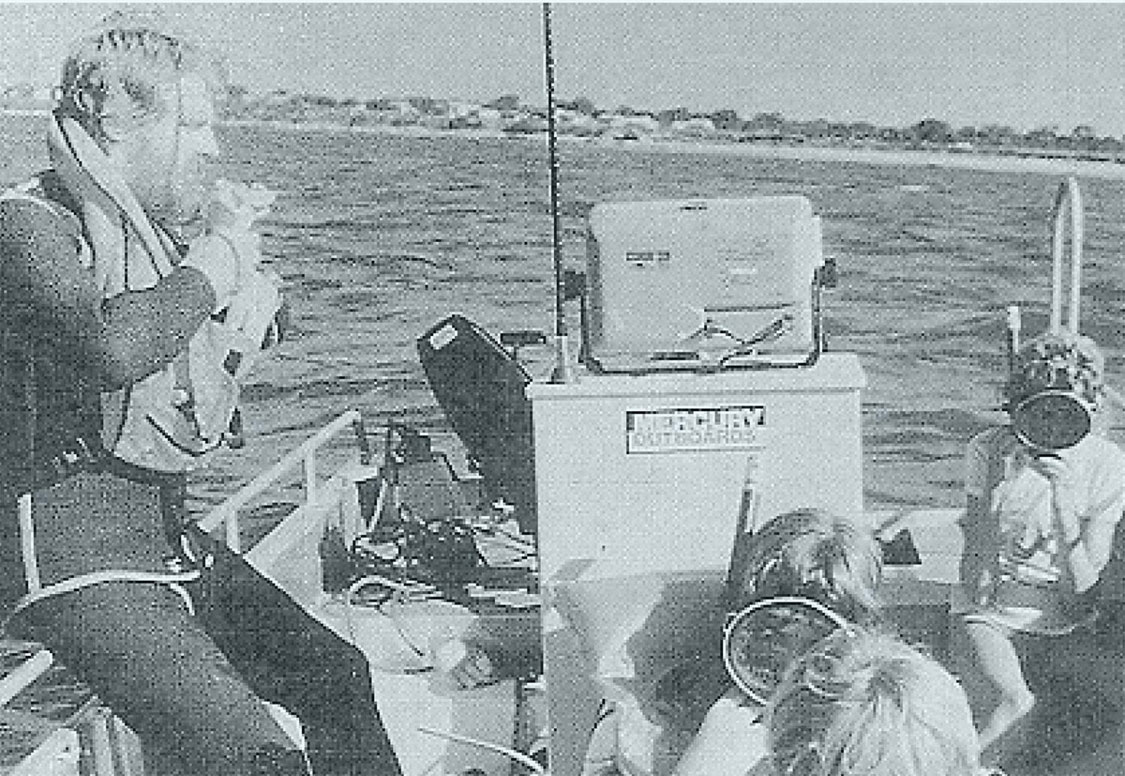
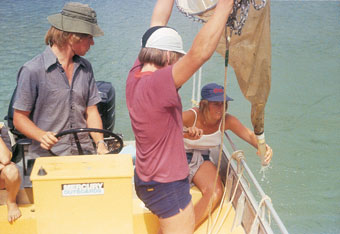
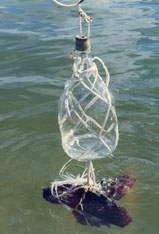



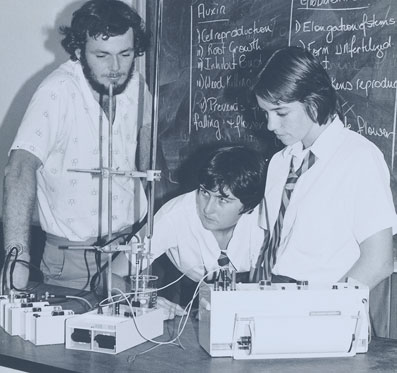
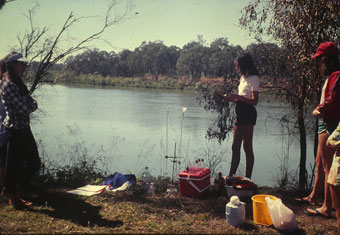
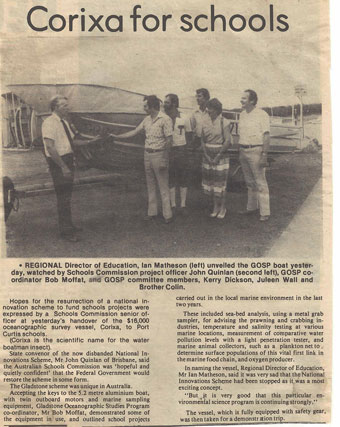

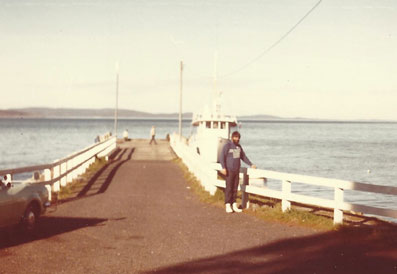
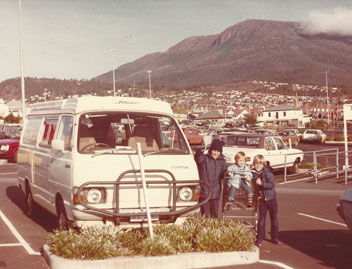












































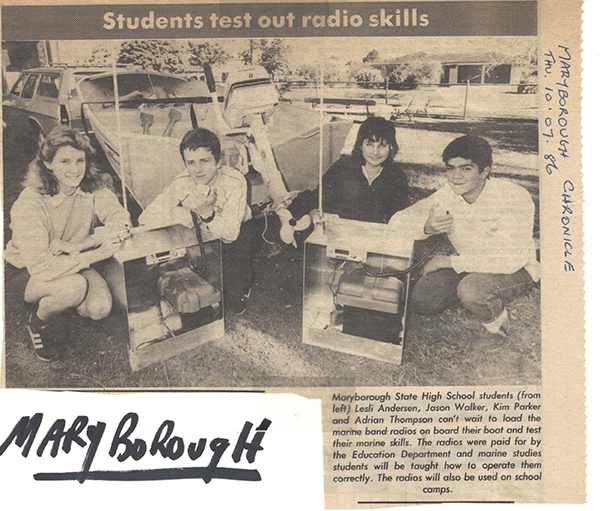
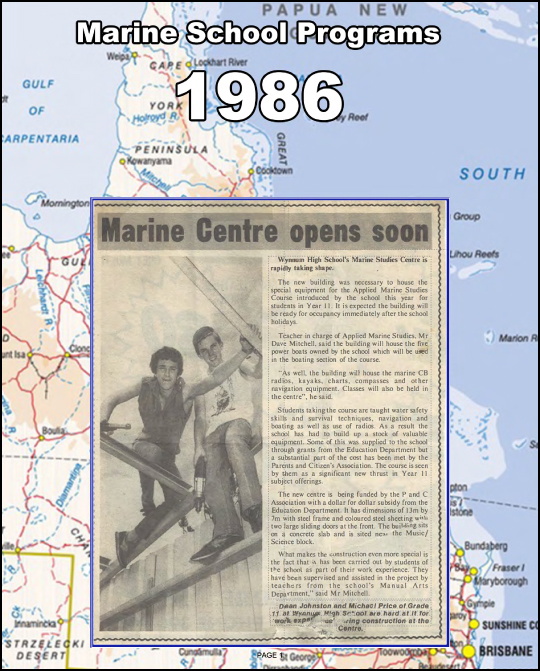
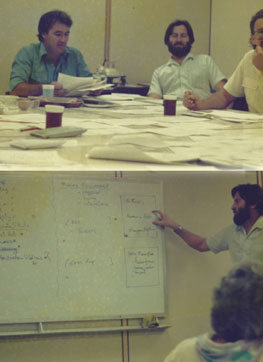
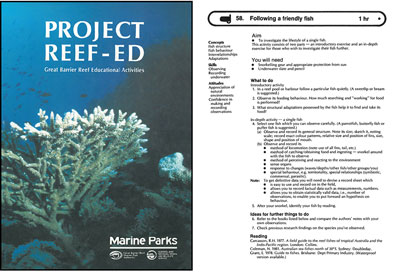

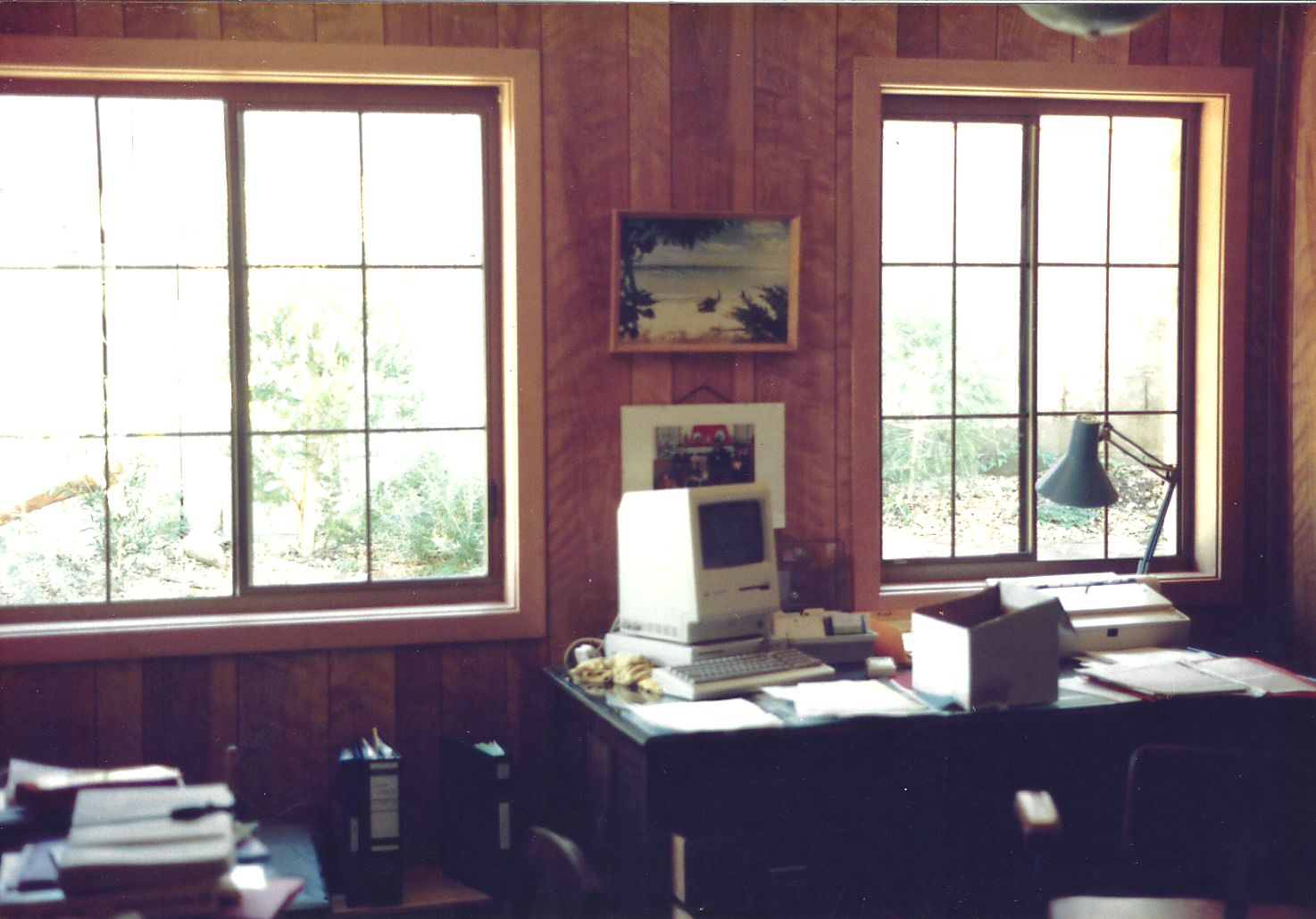


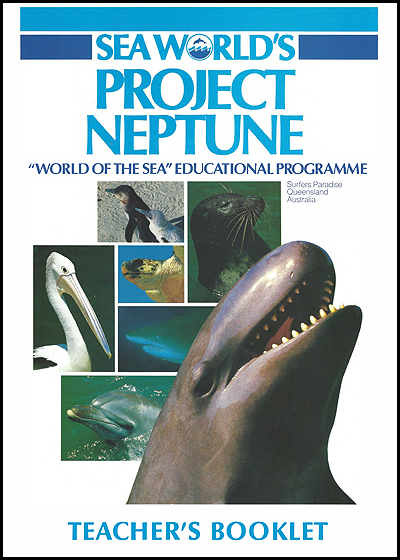


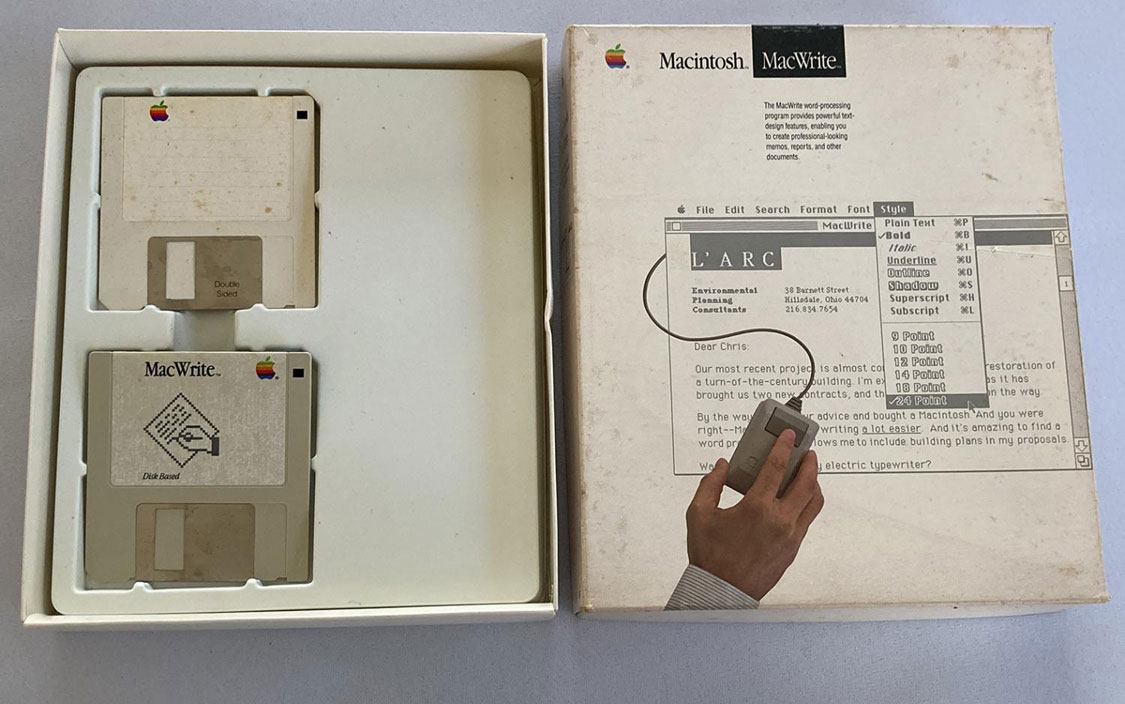
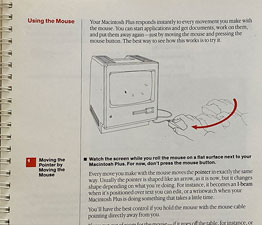
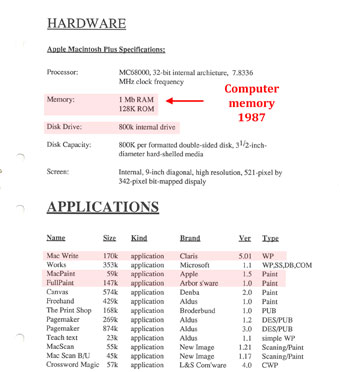
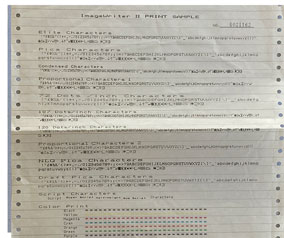

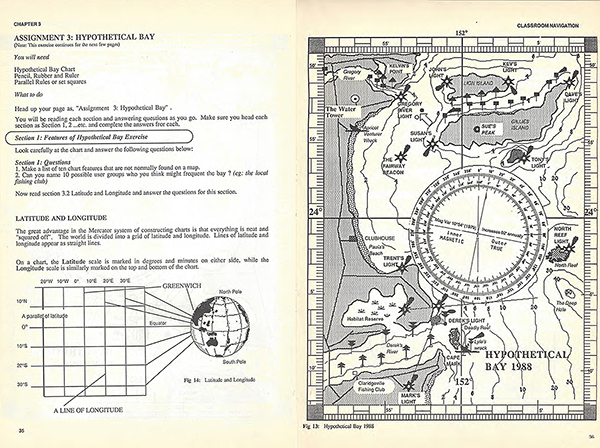
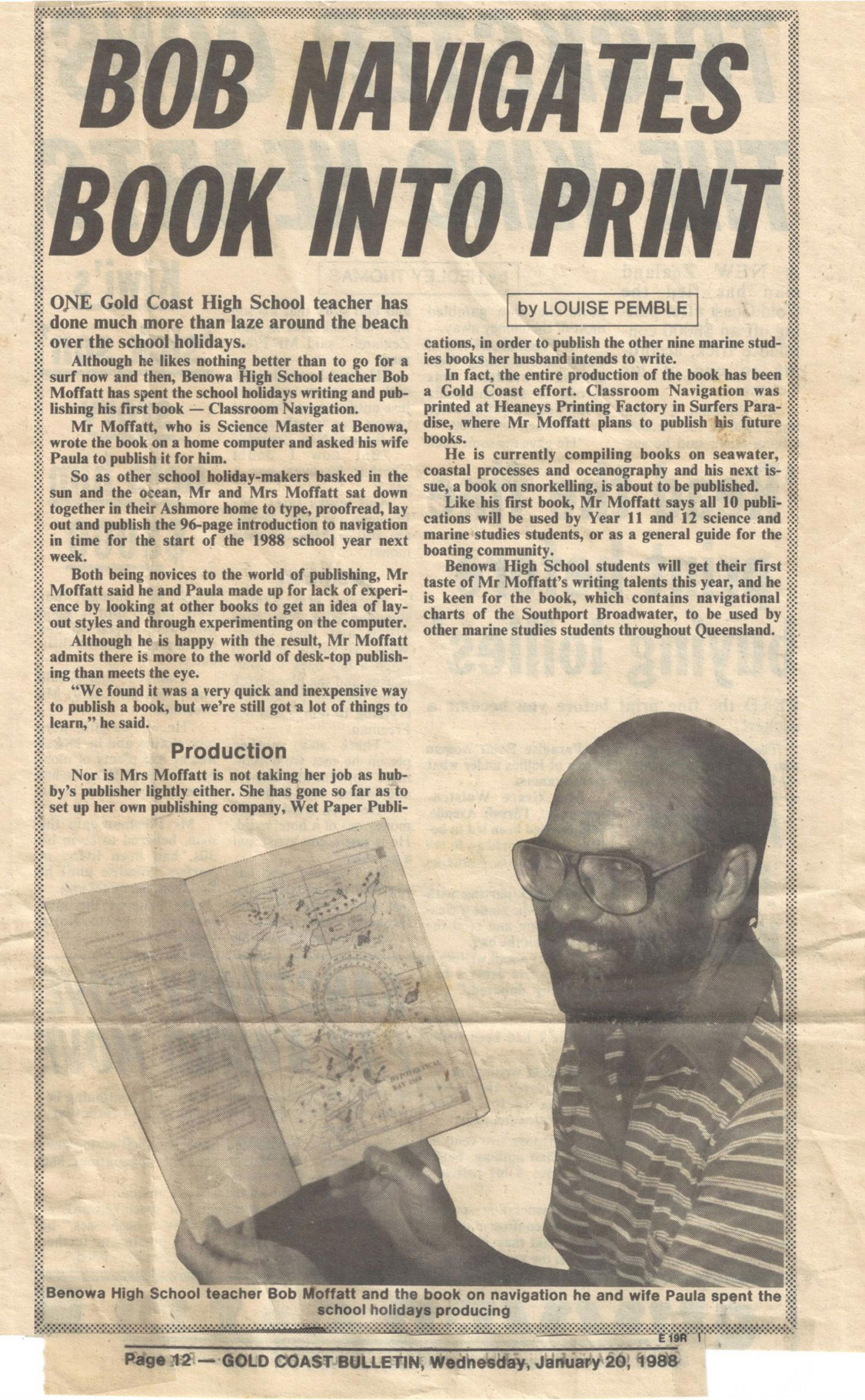
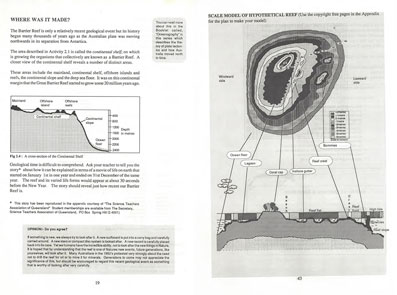

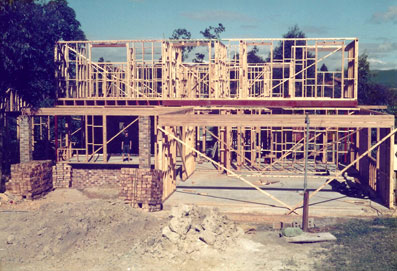
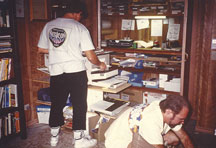

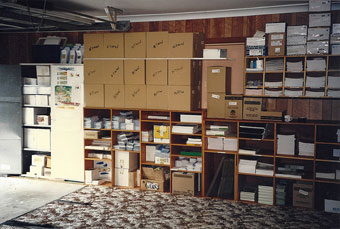



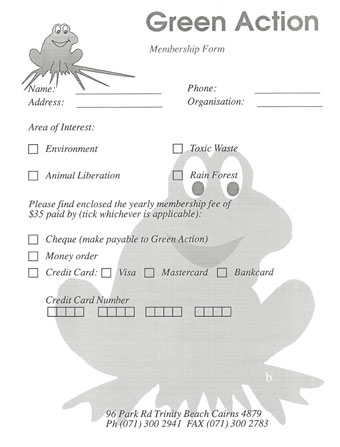

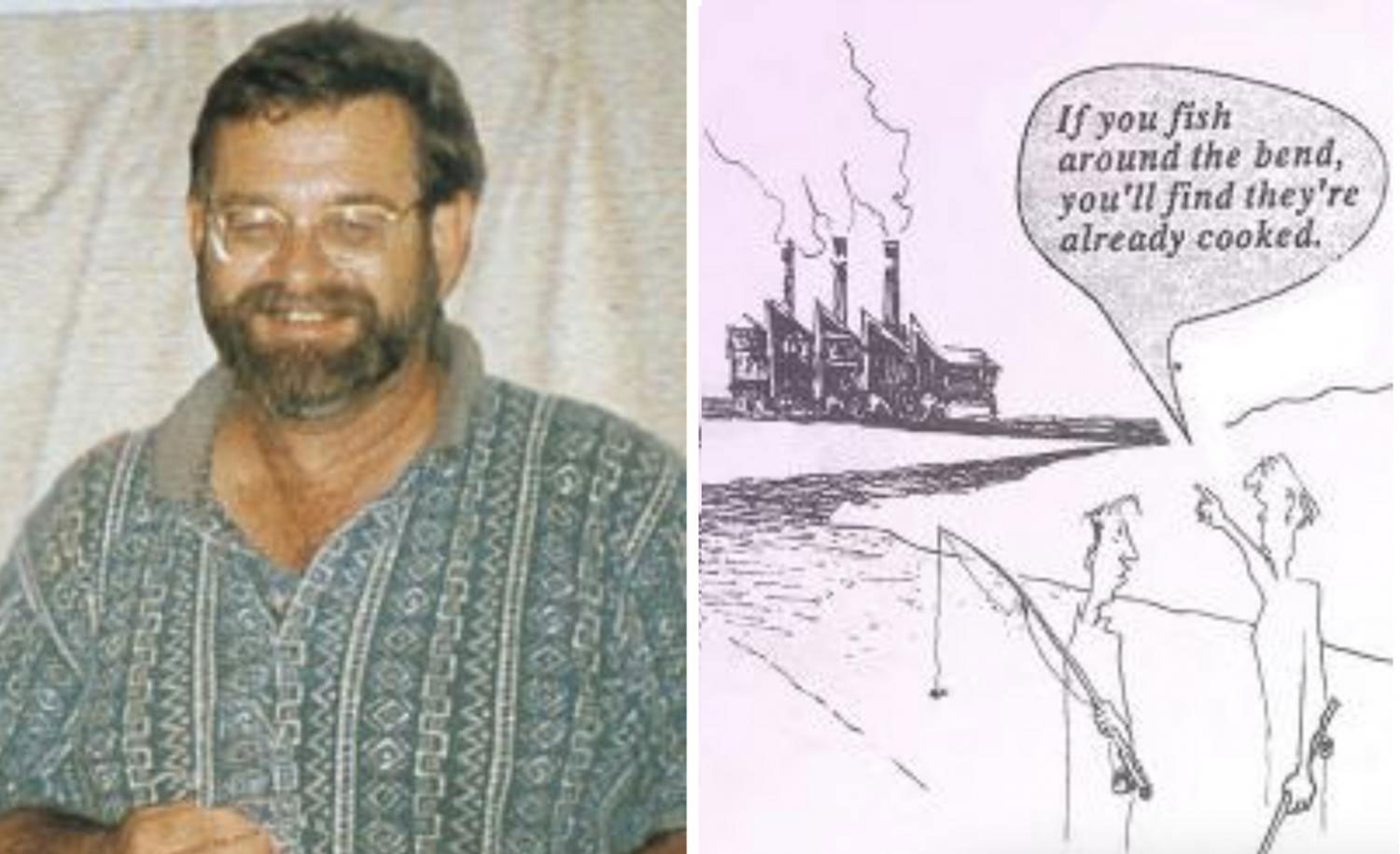
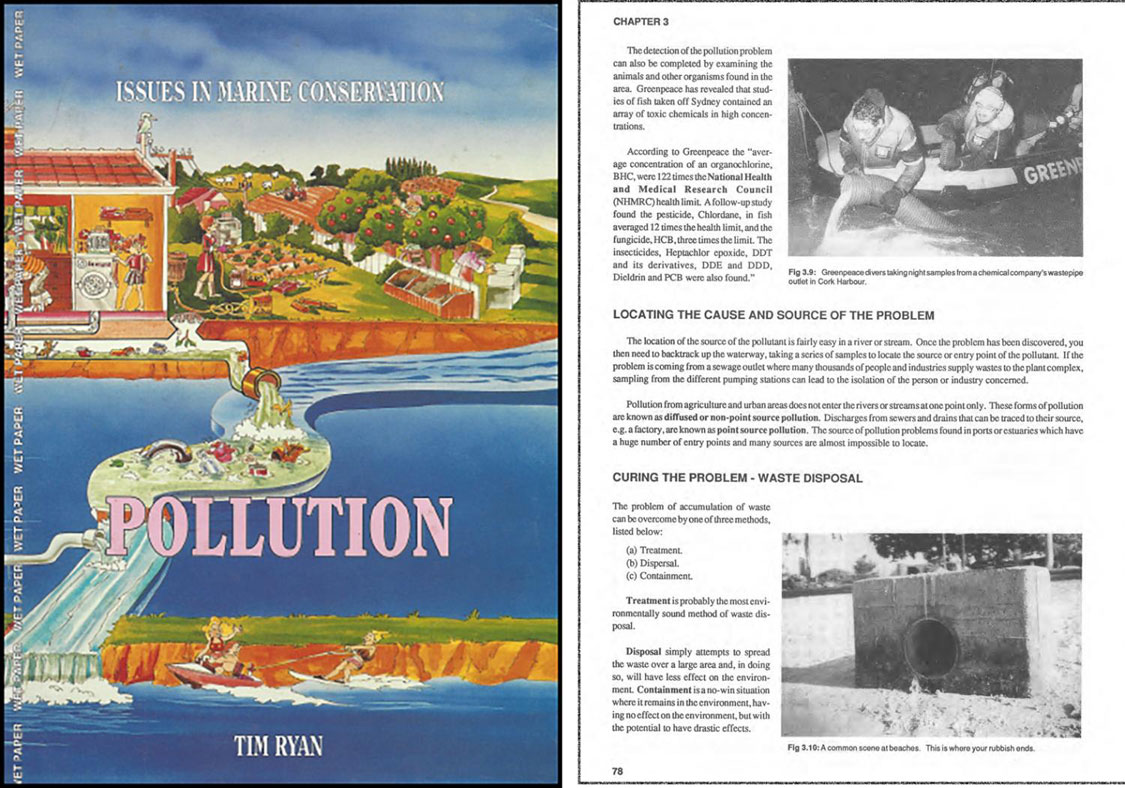
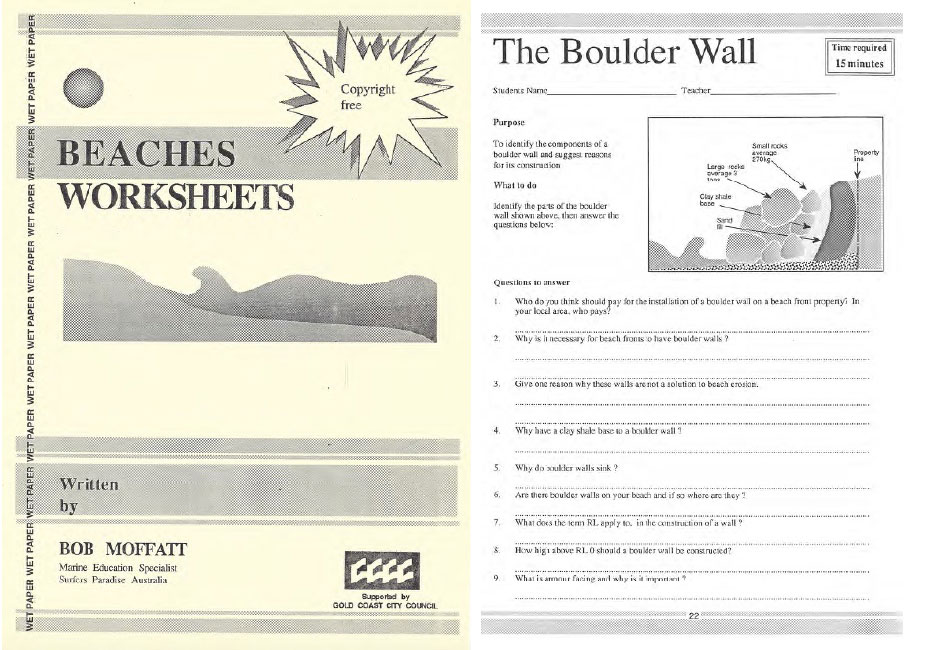



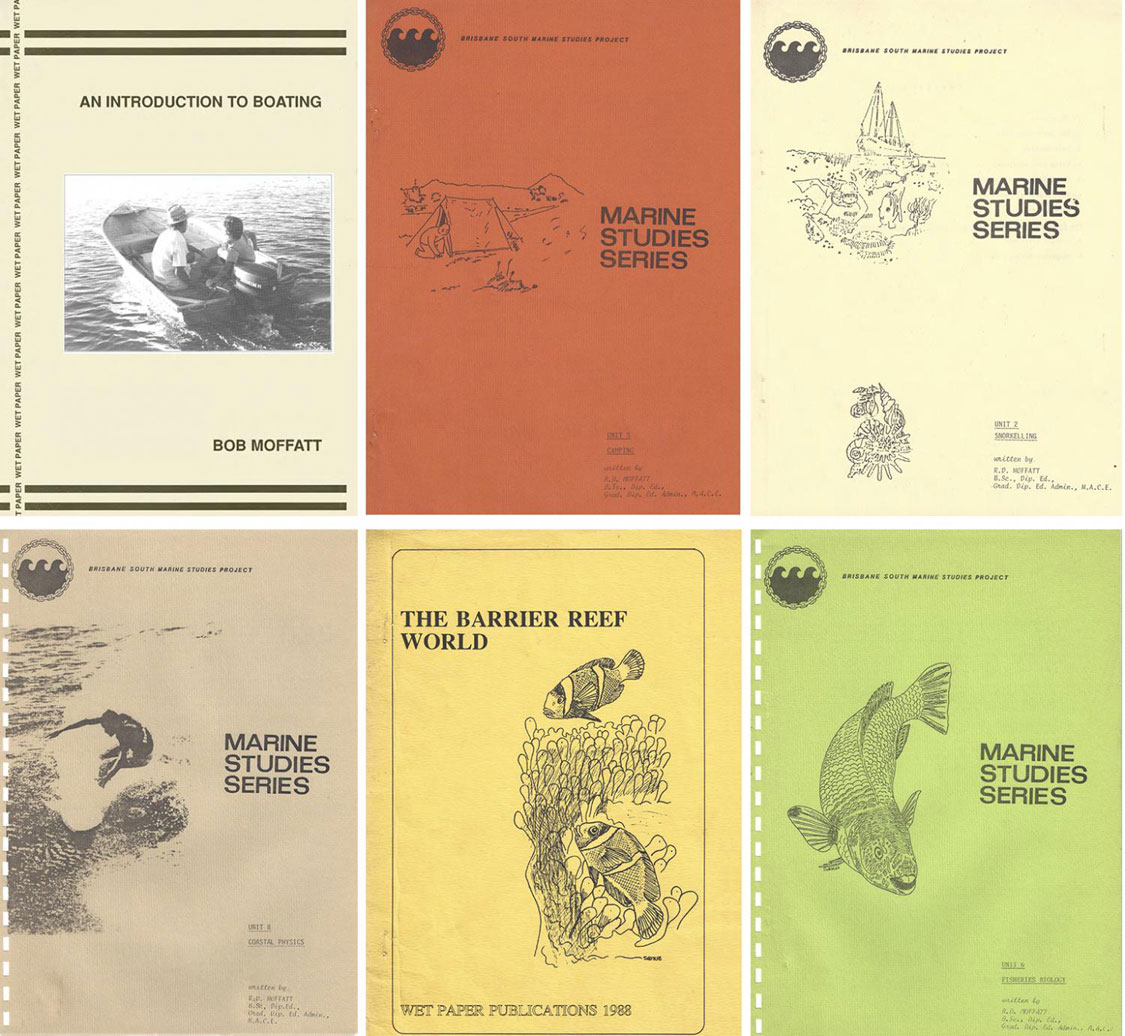
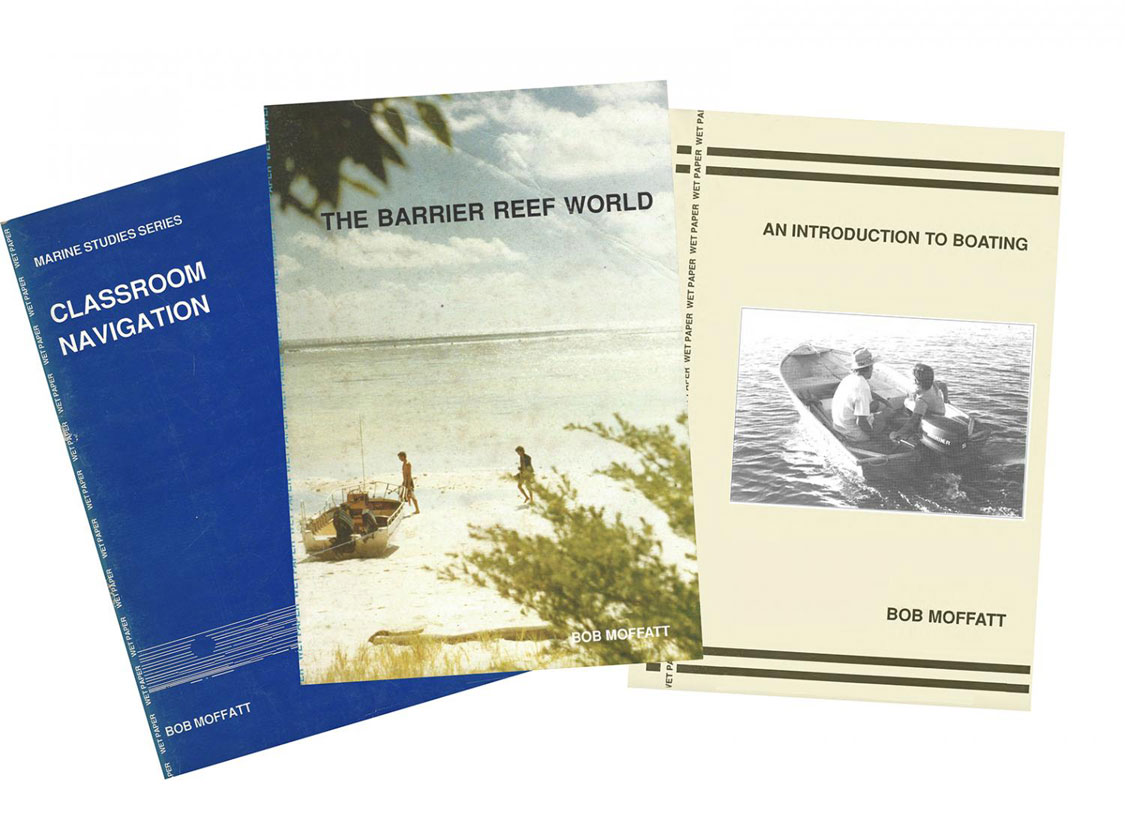
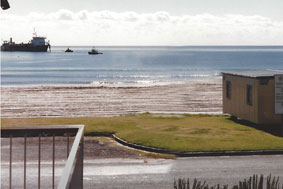
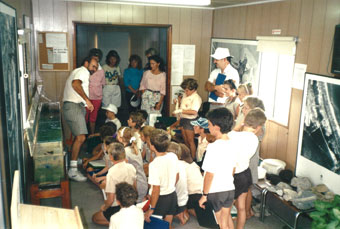

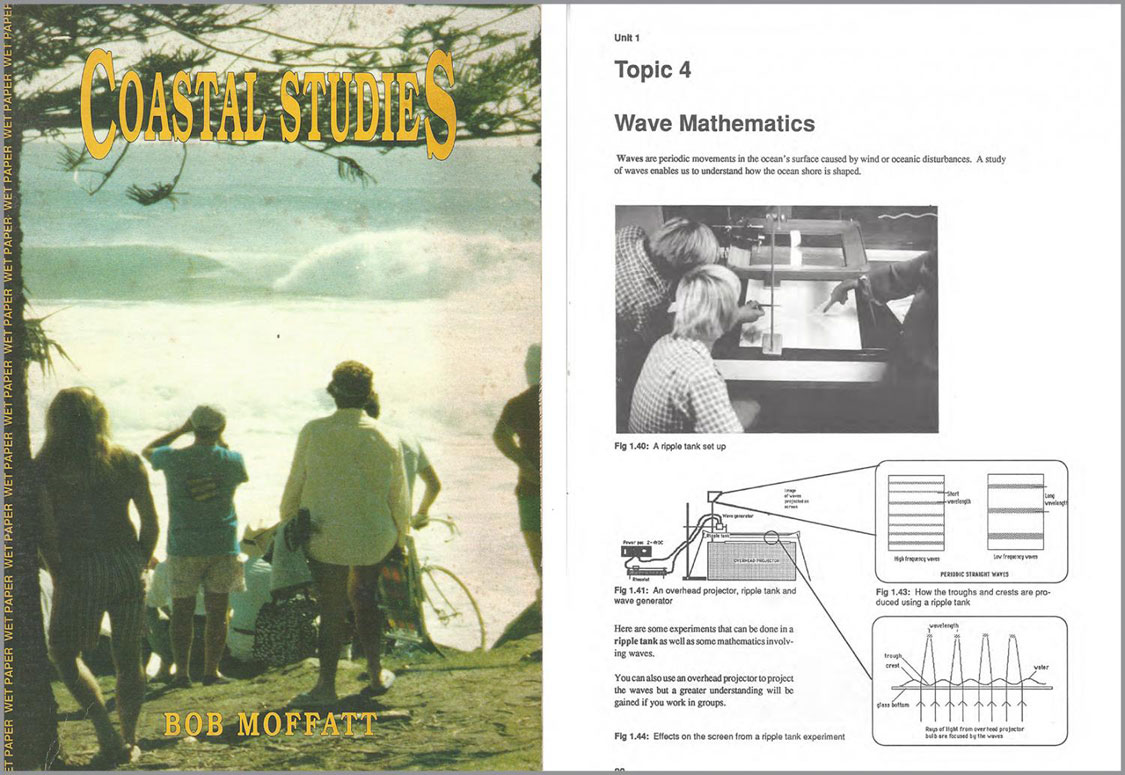



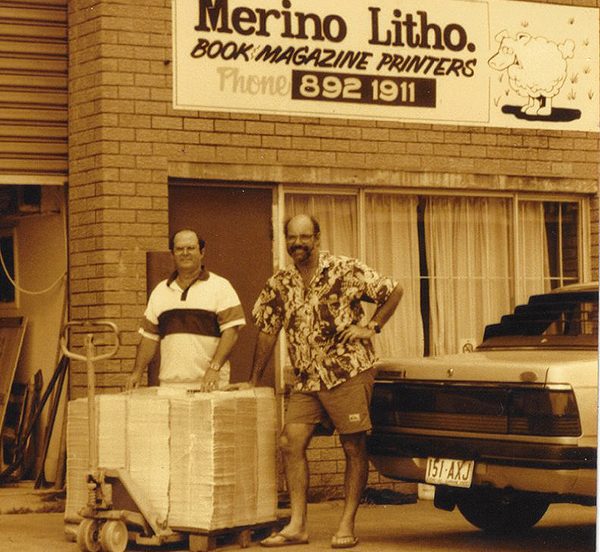
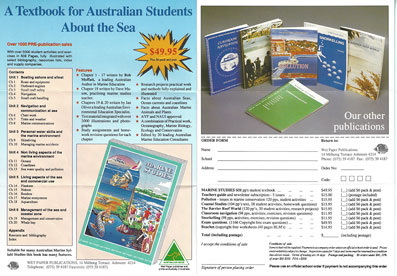

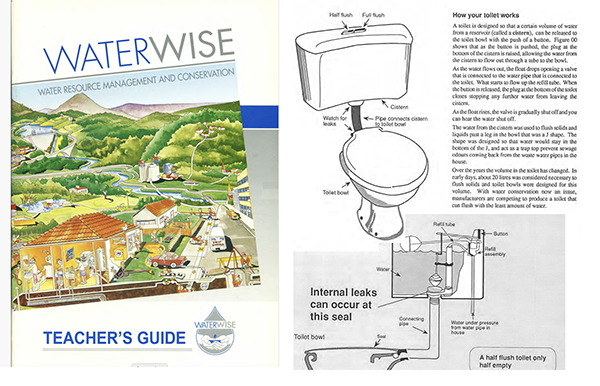
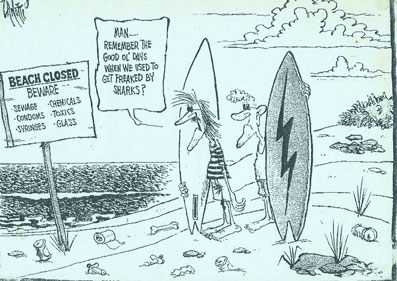
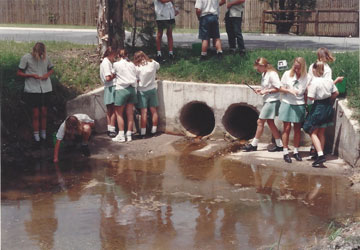


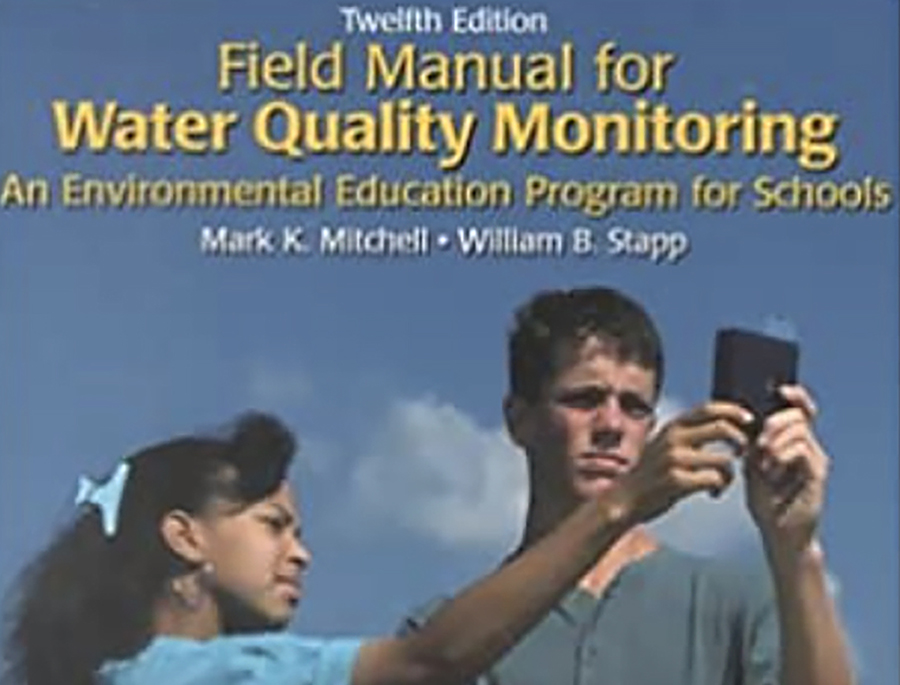
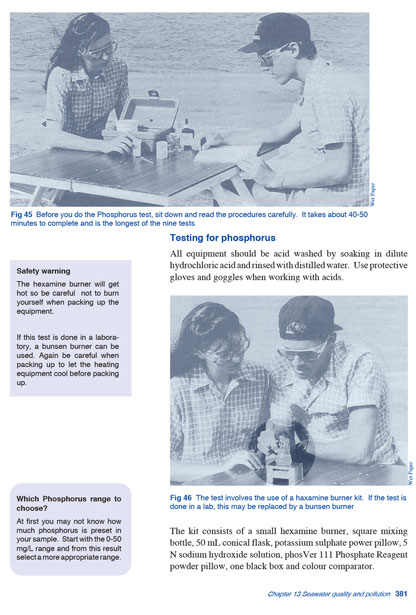
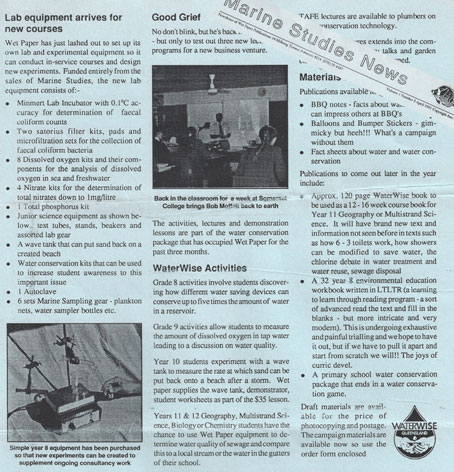

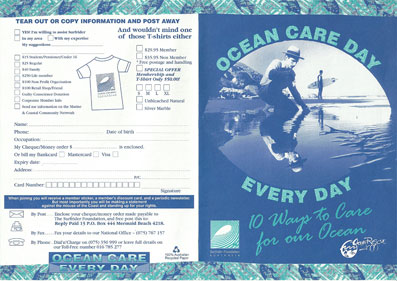
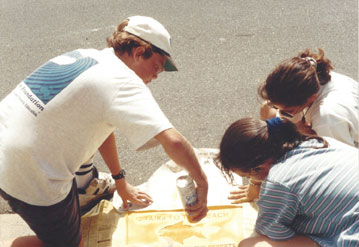
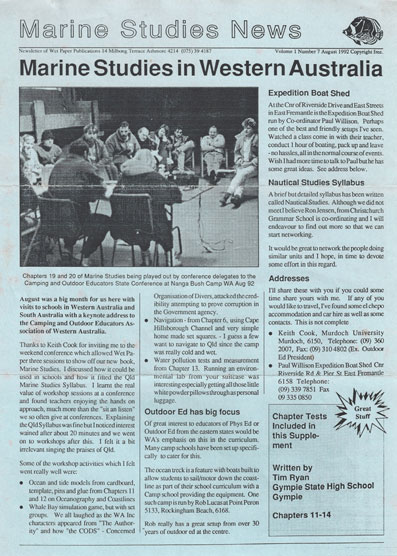
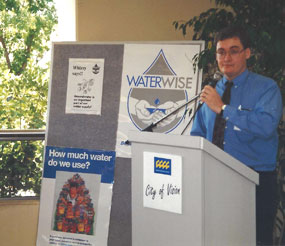
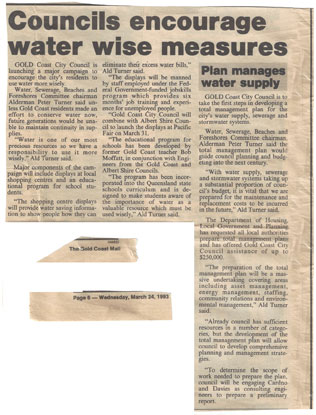
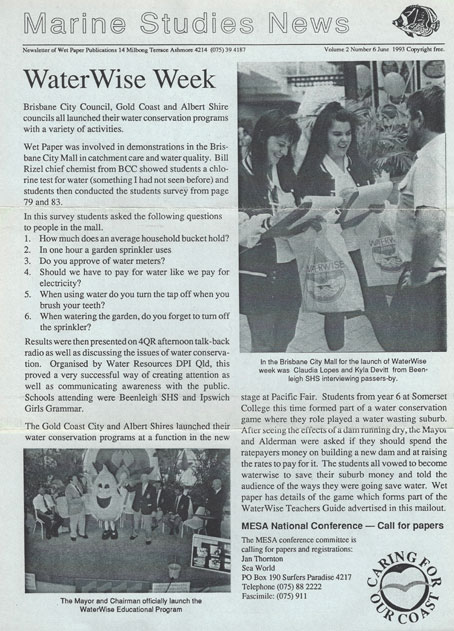
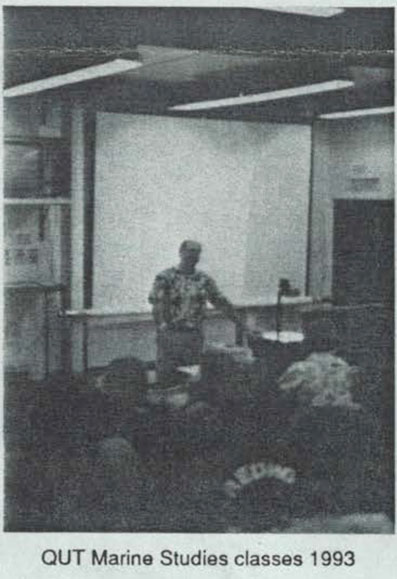

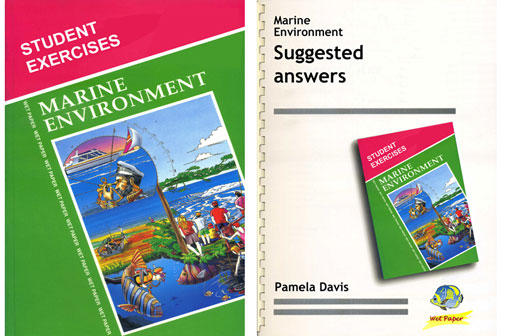


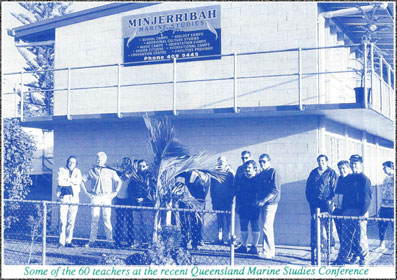
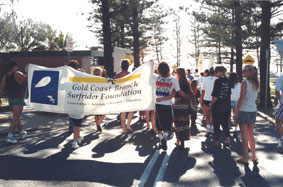


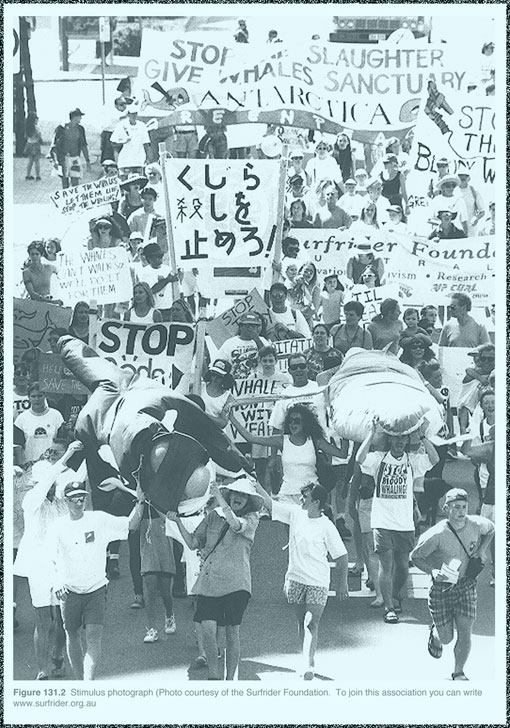

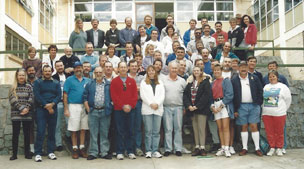

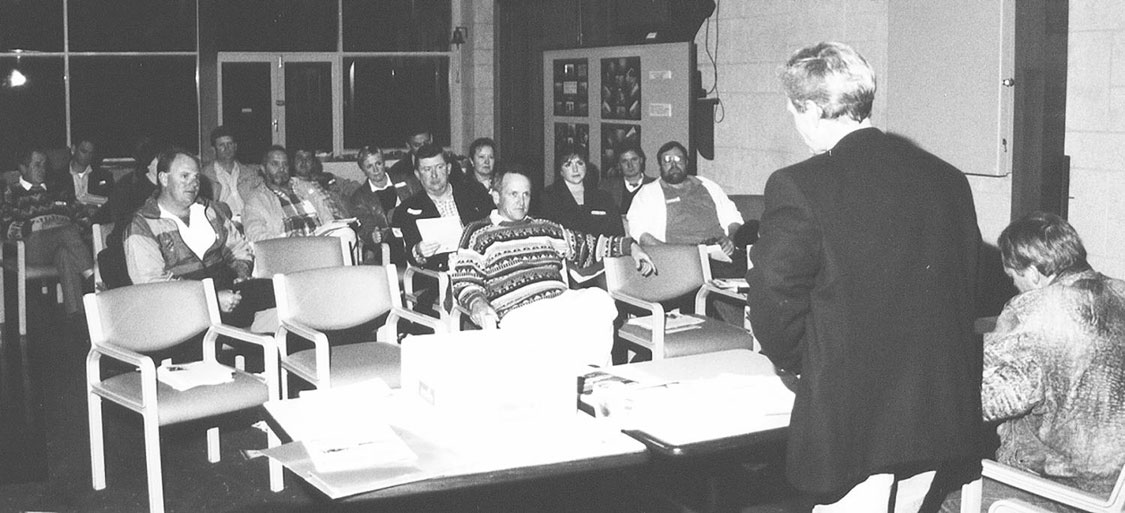
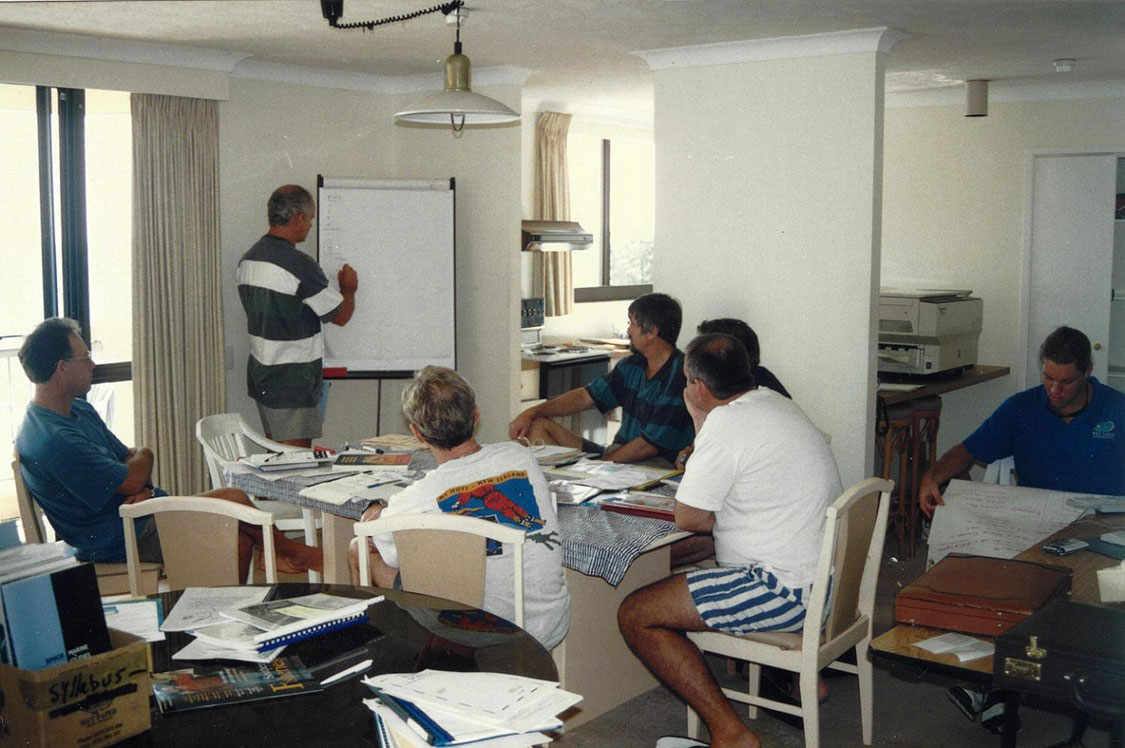
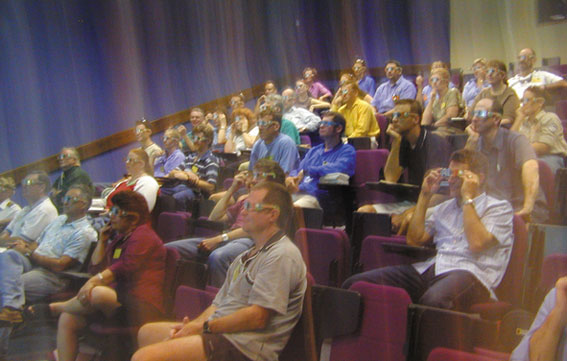
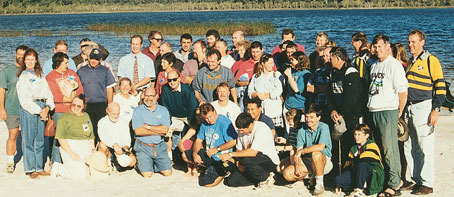


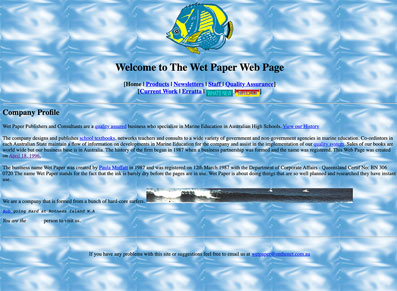


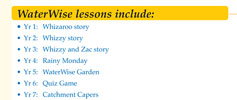

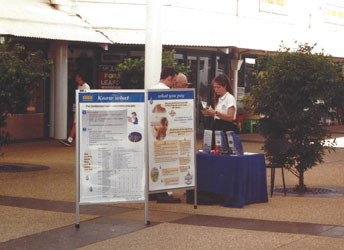
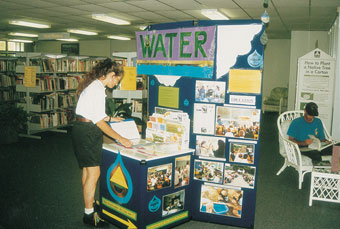
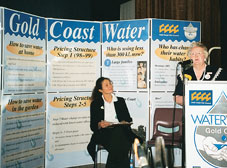 \
\